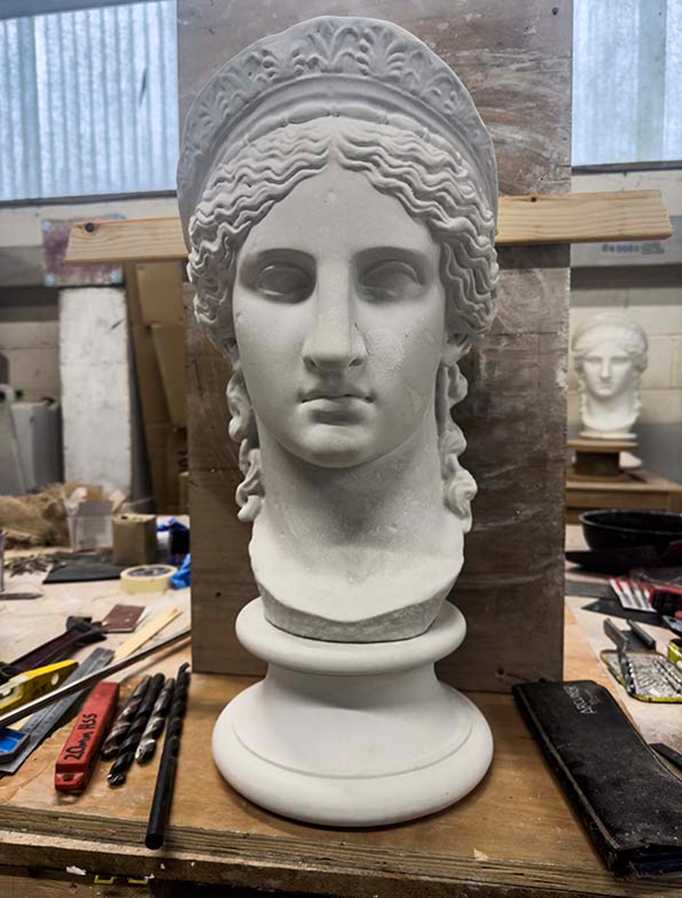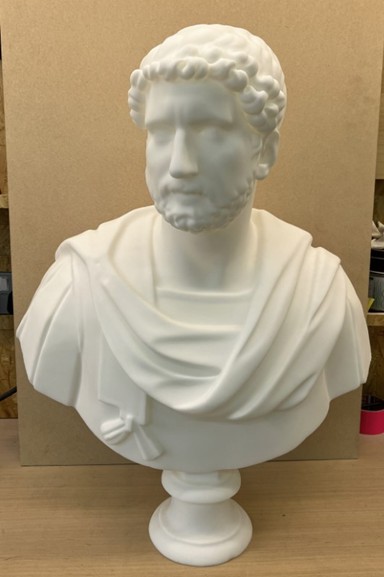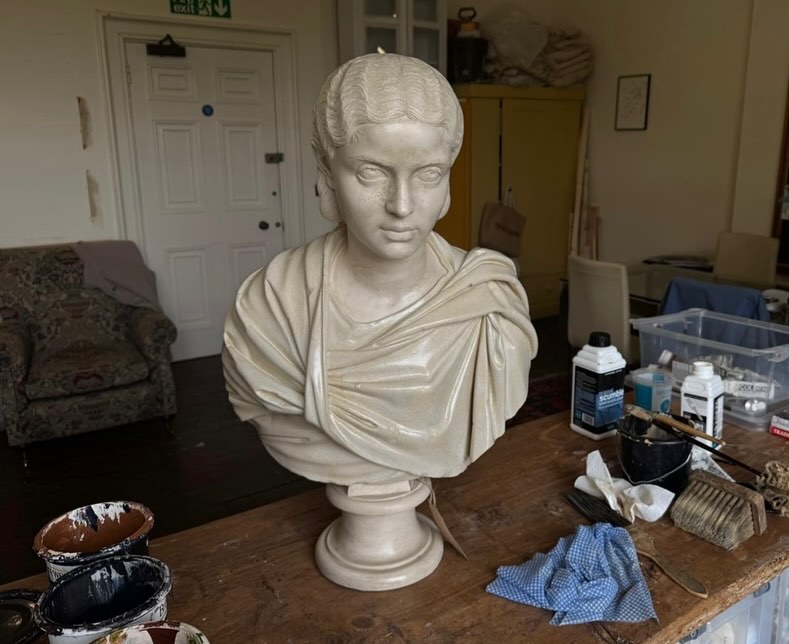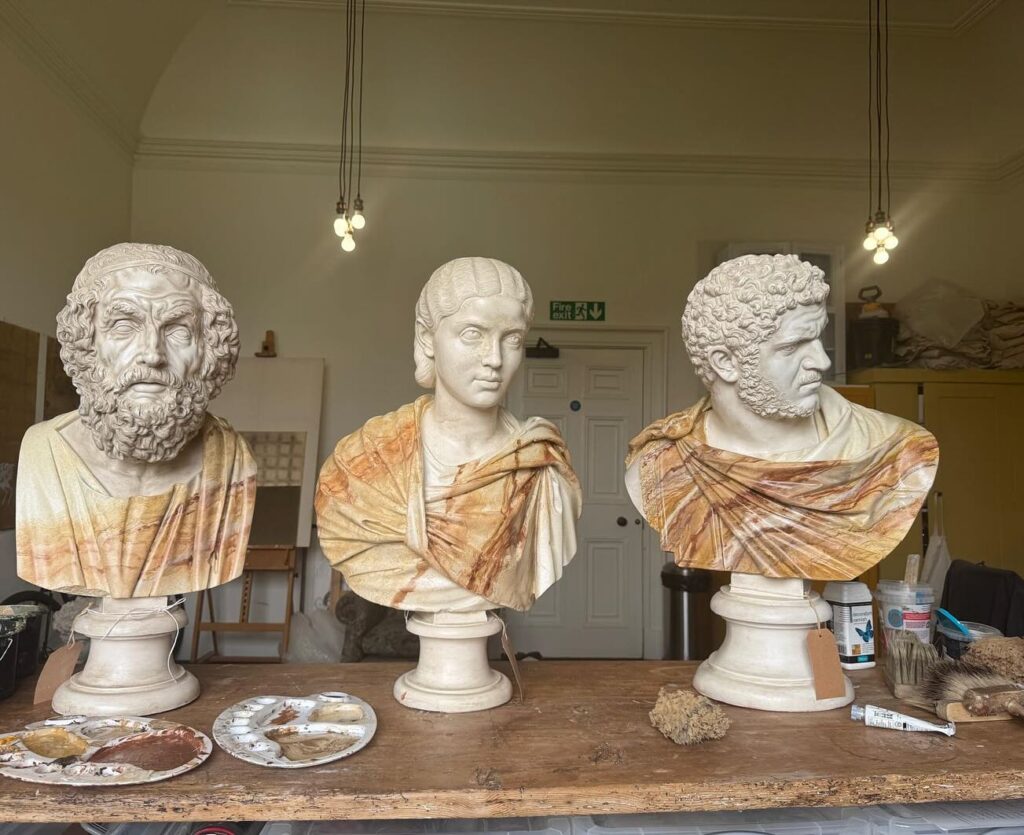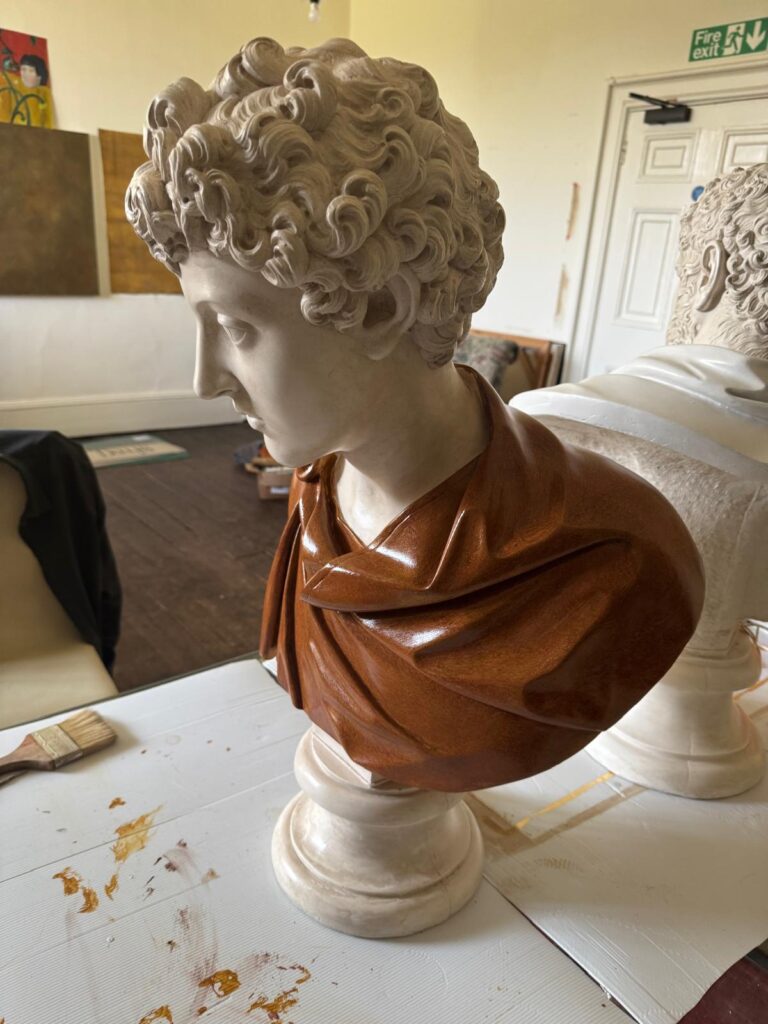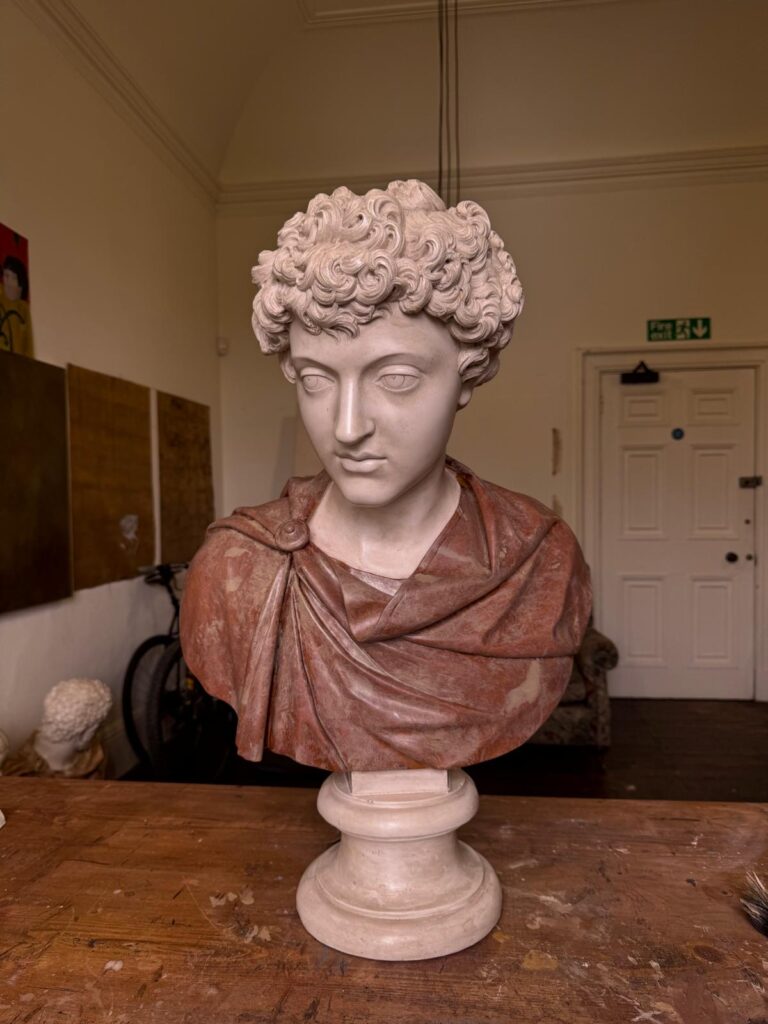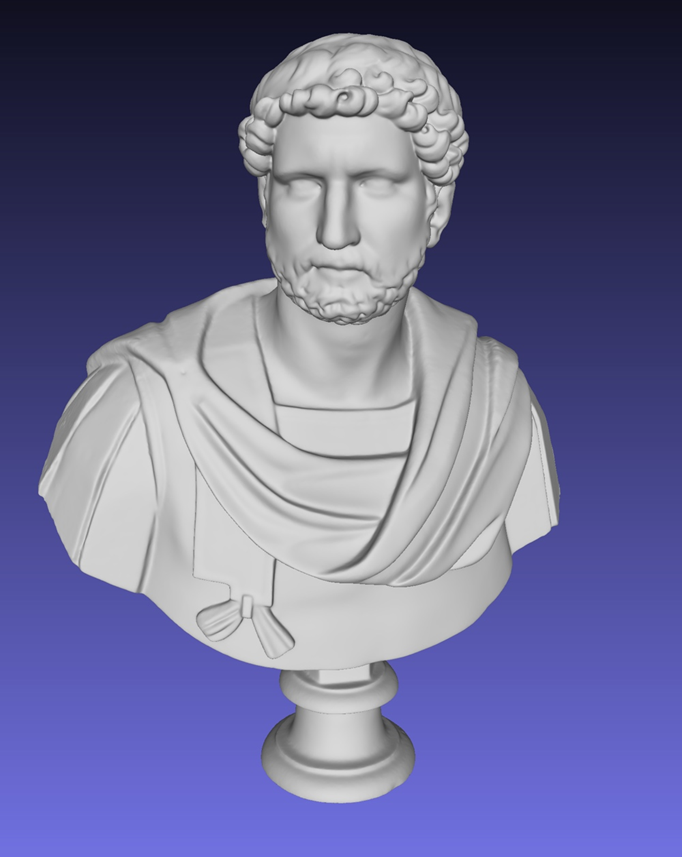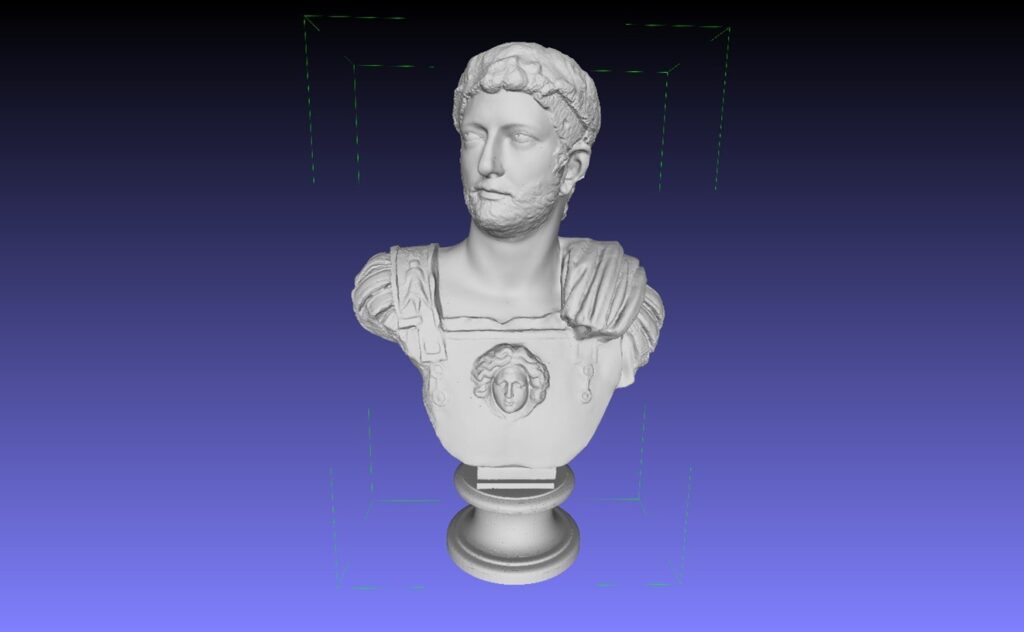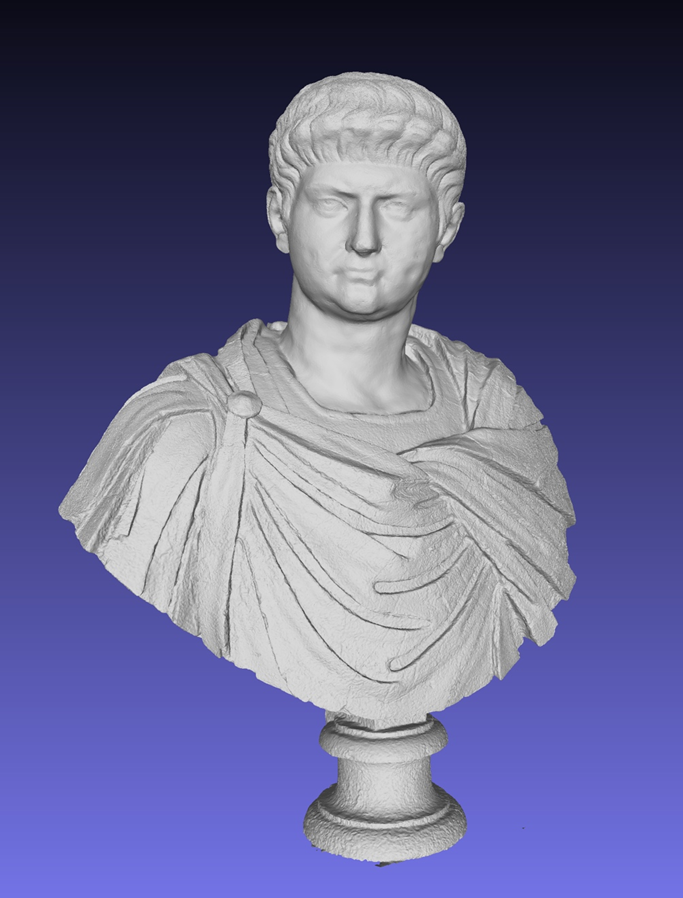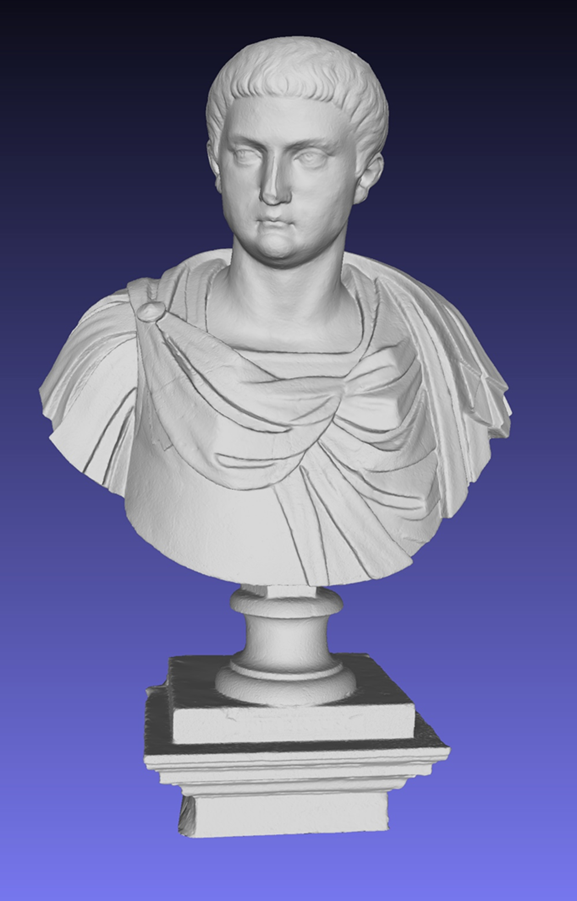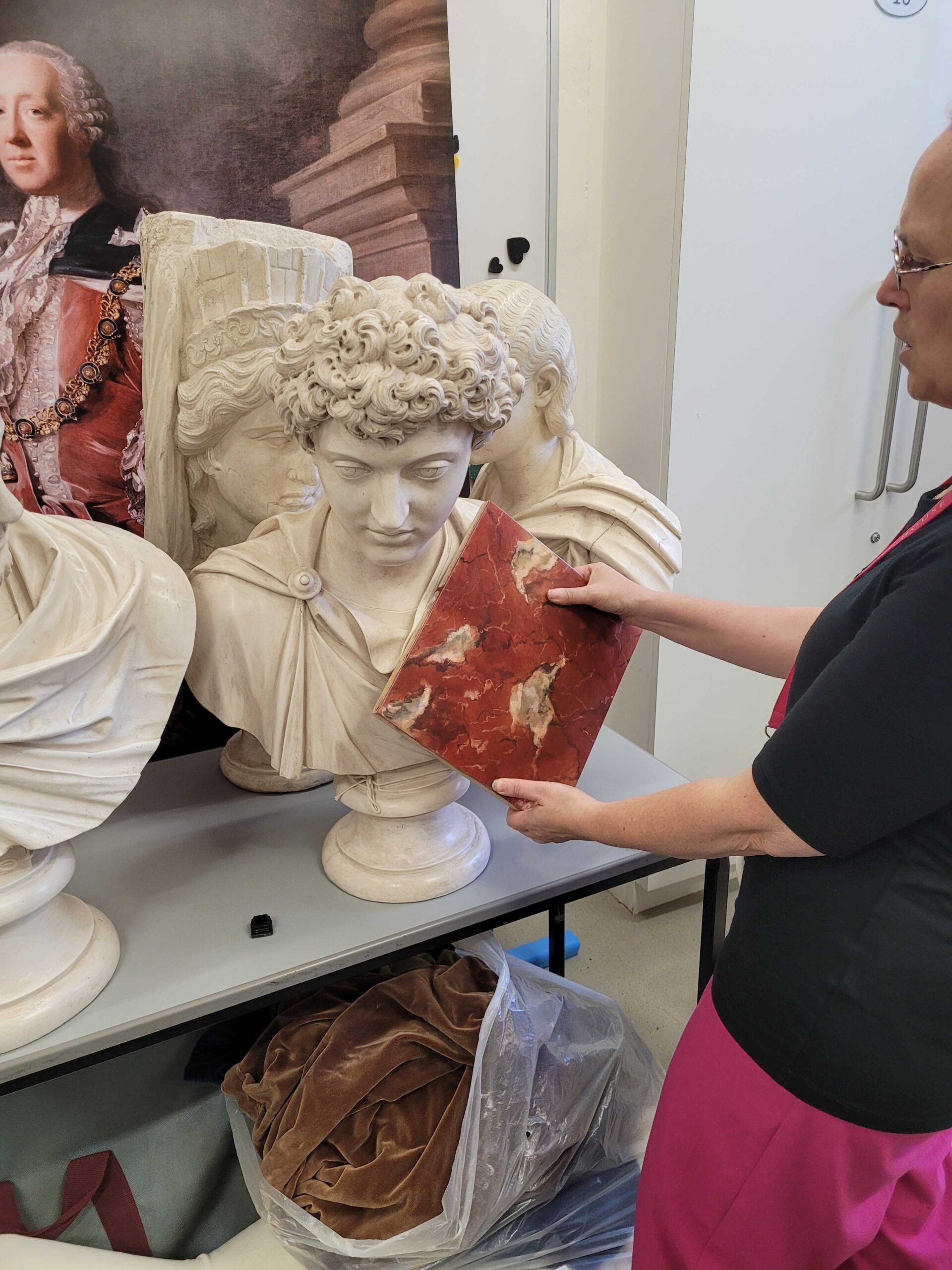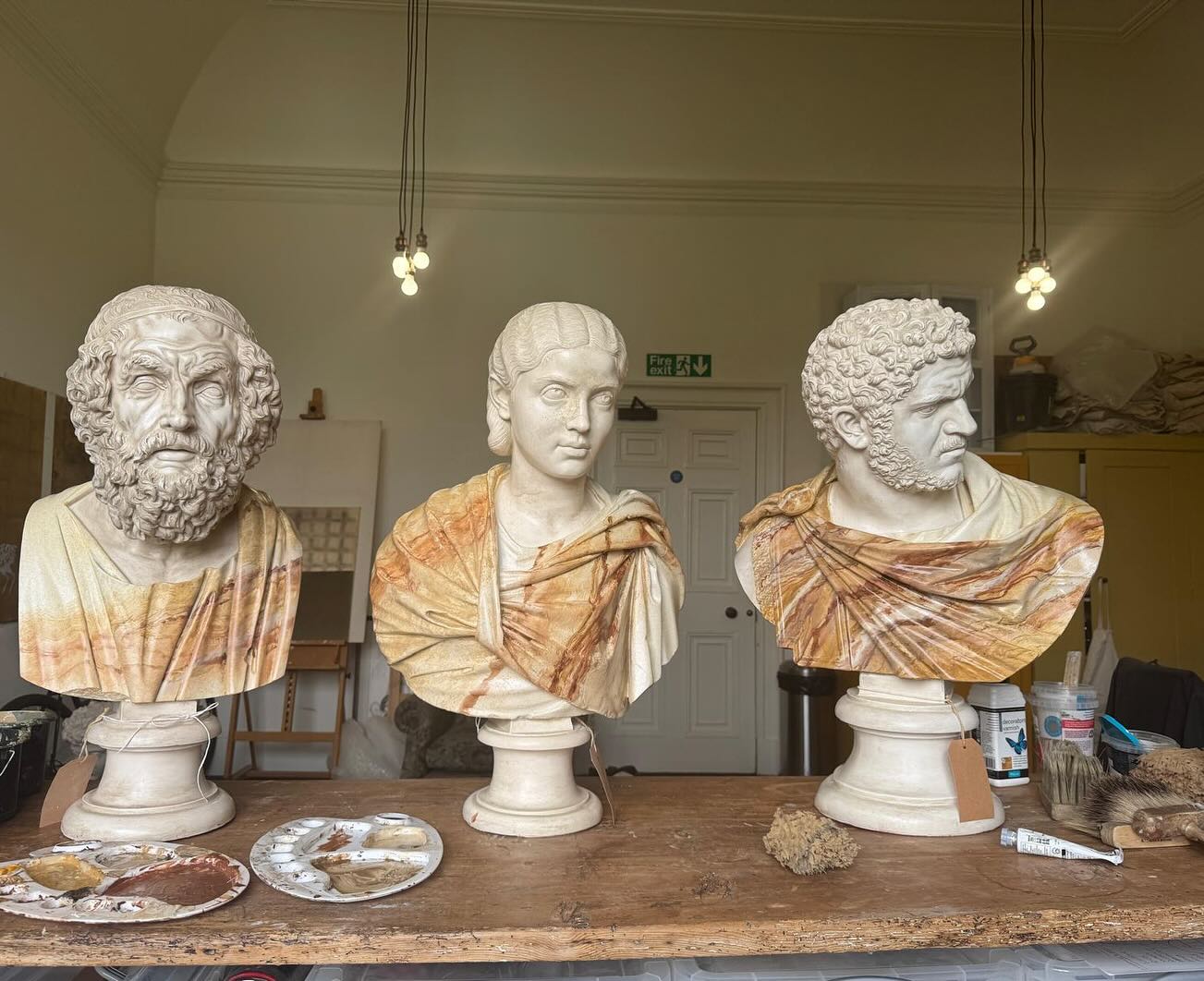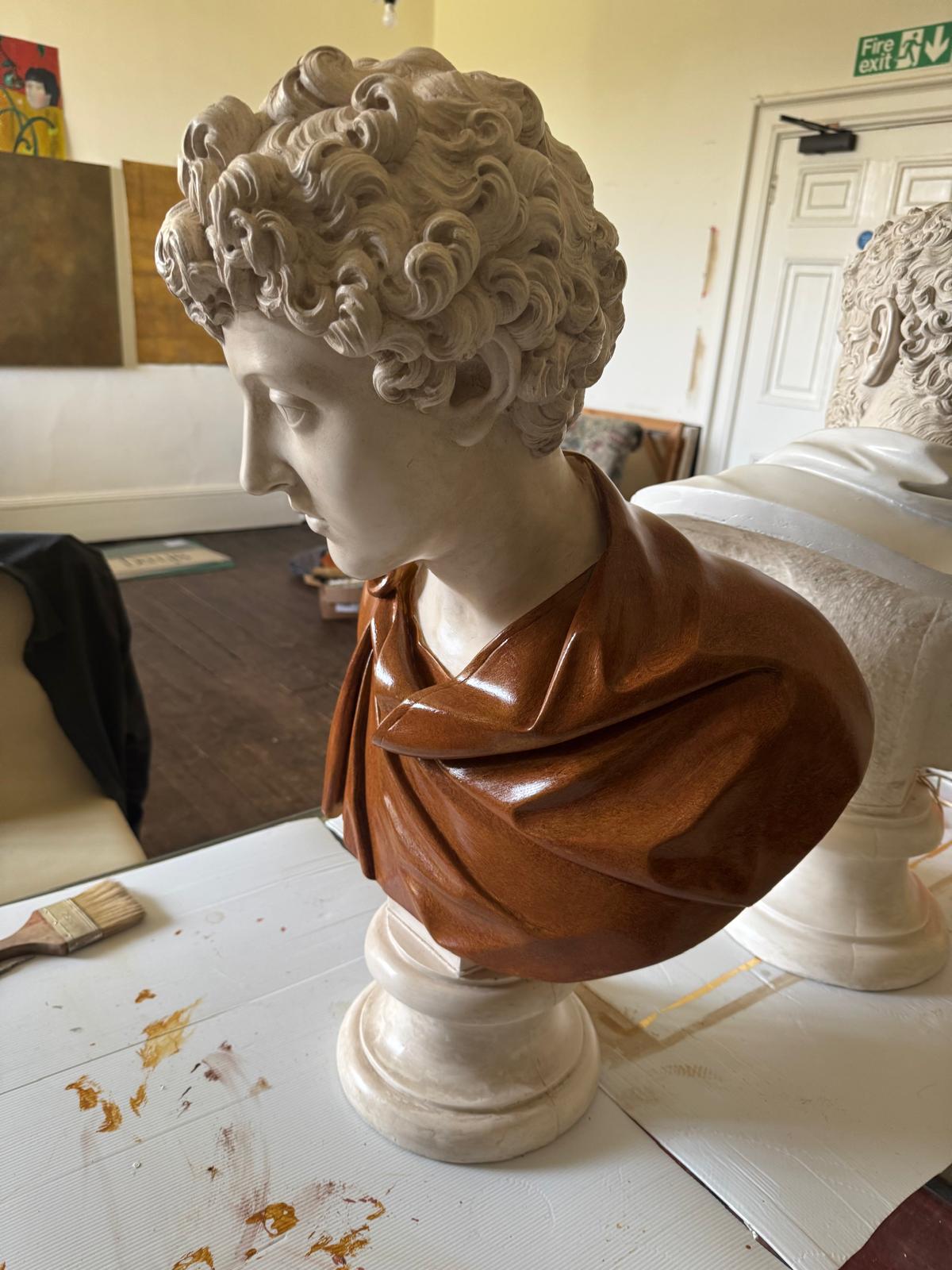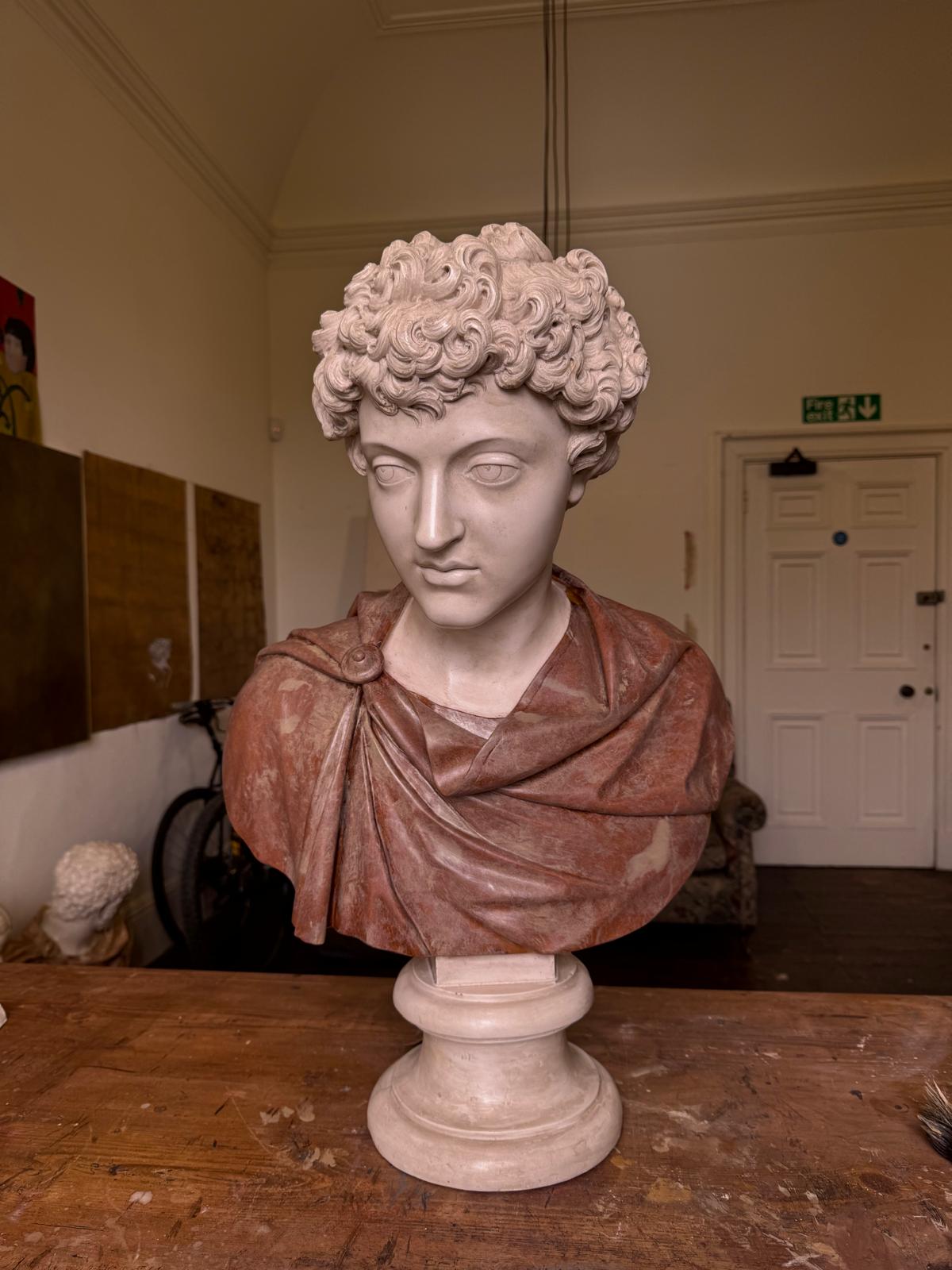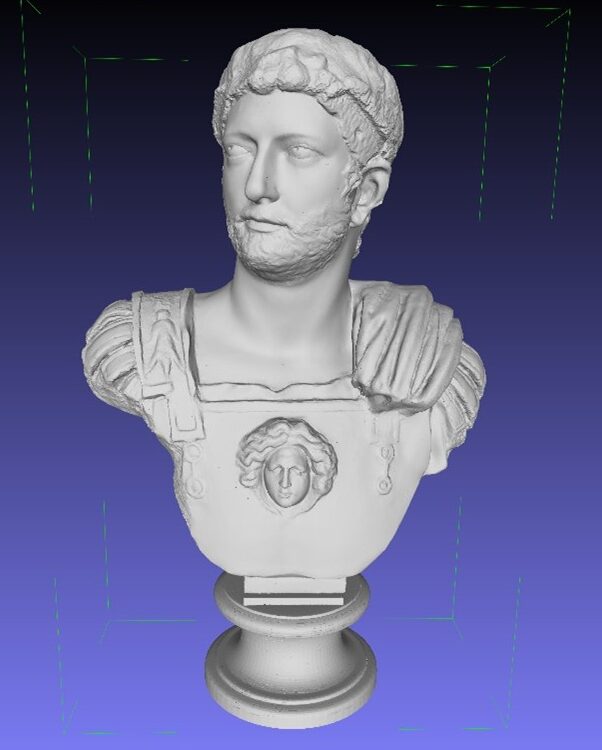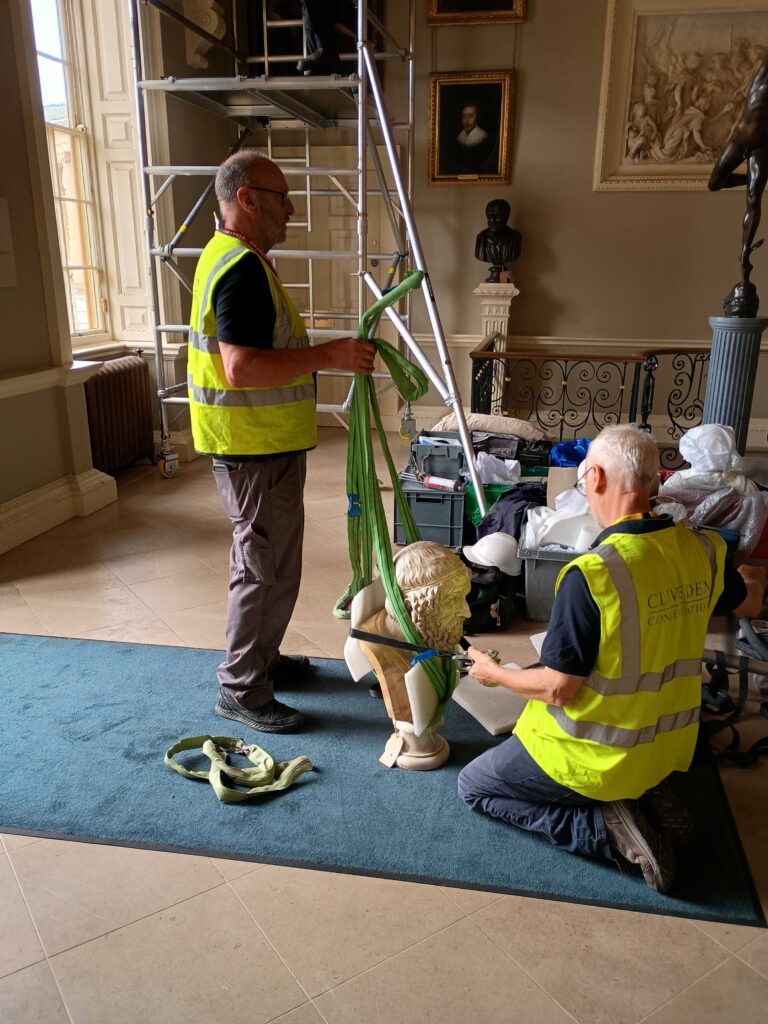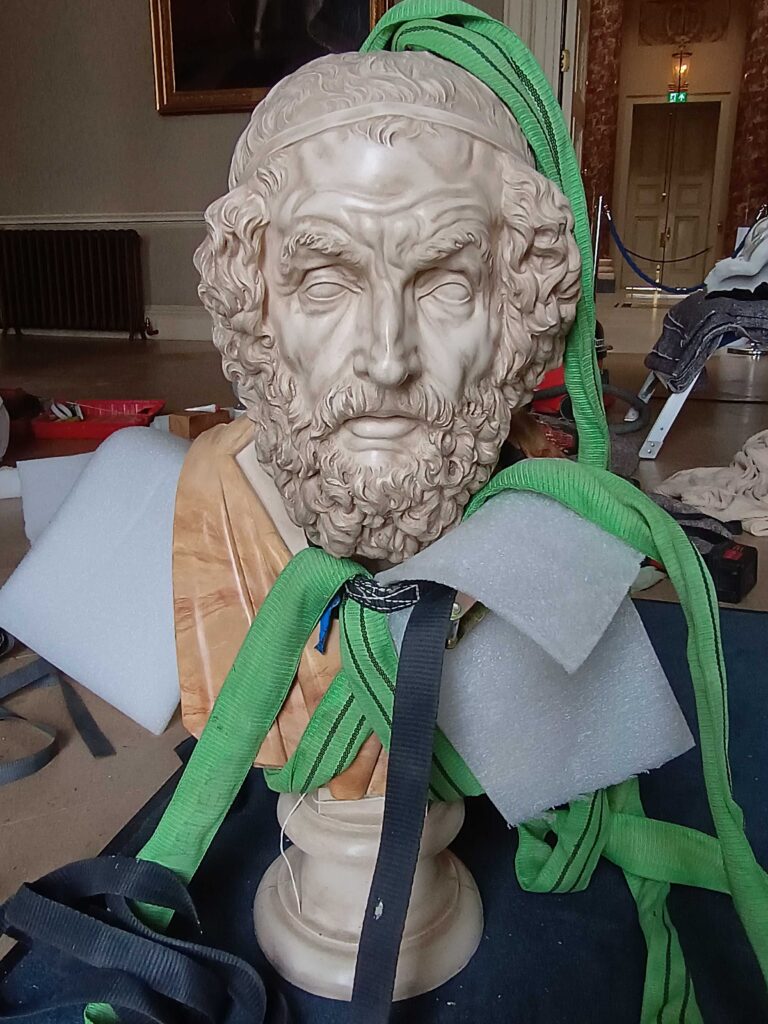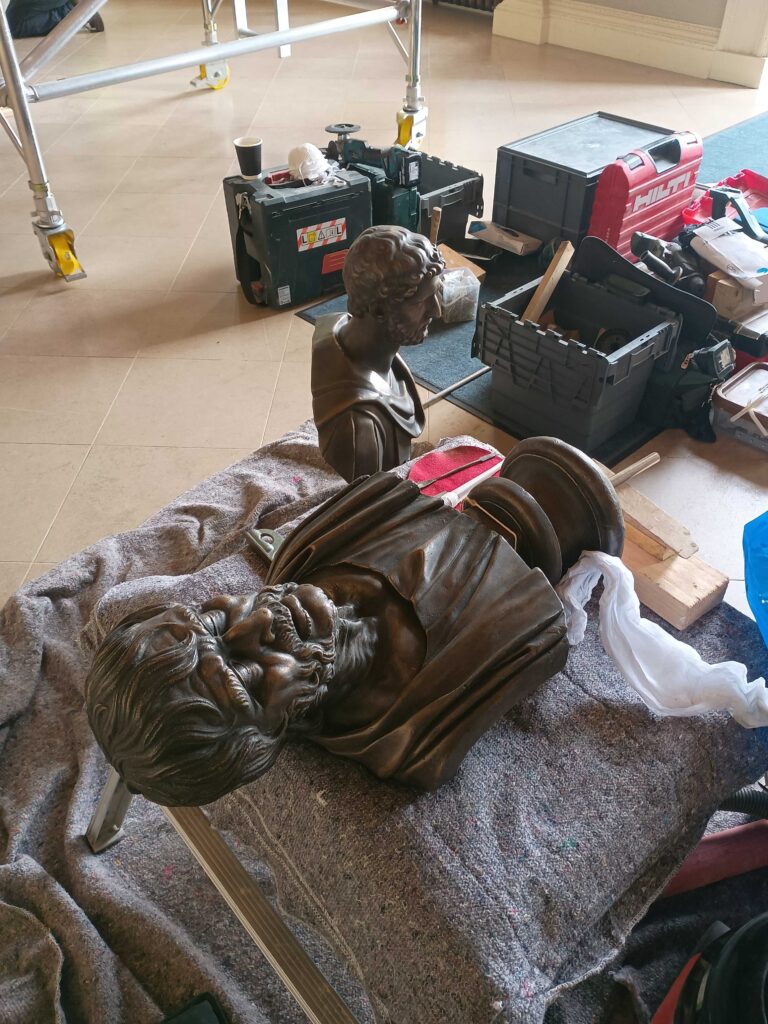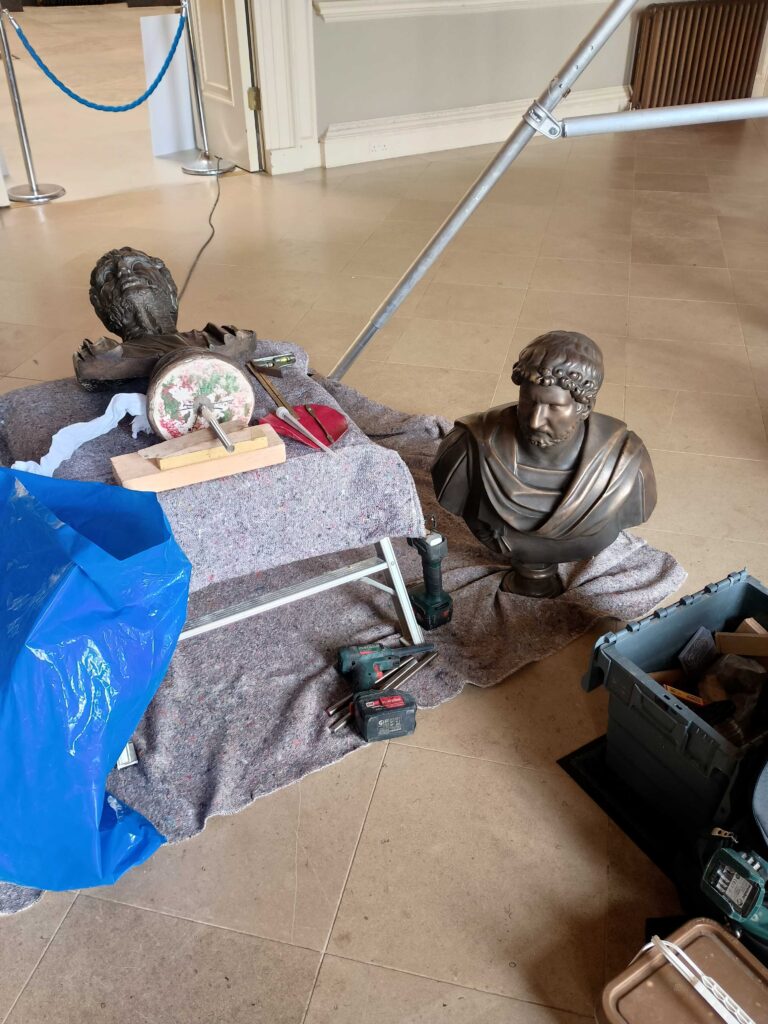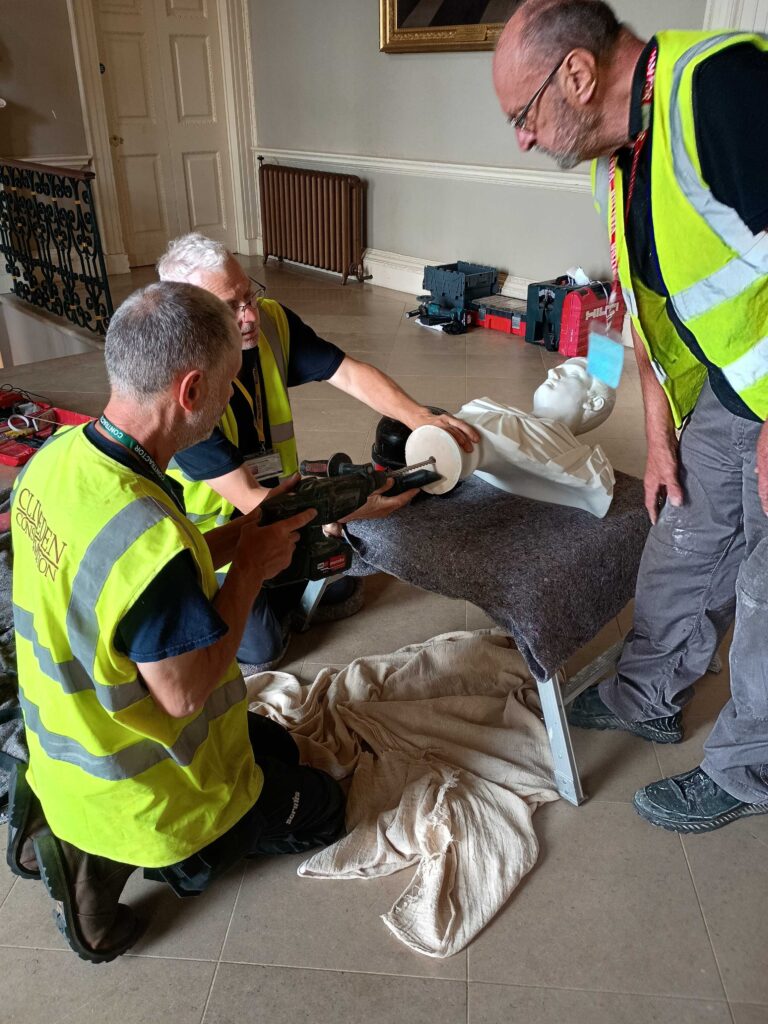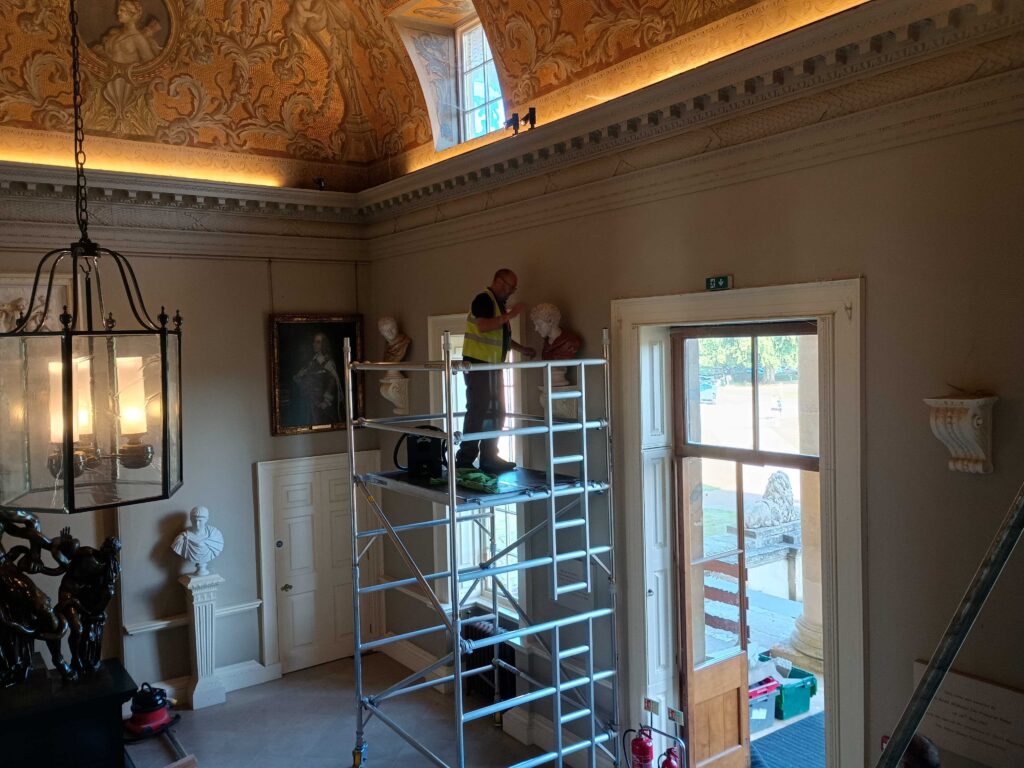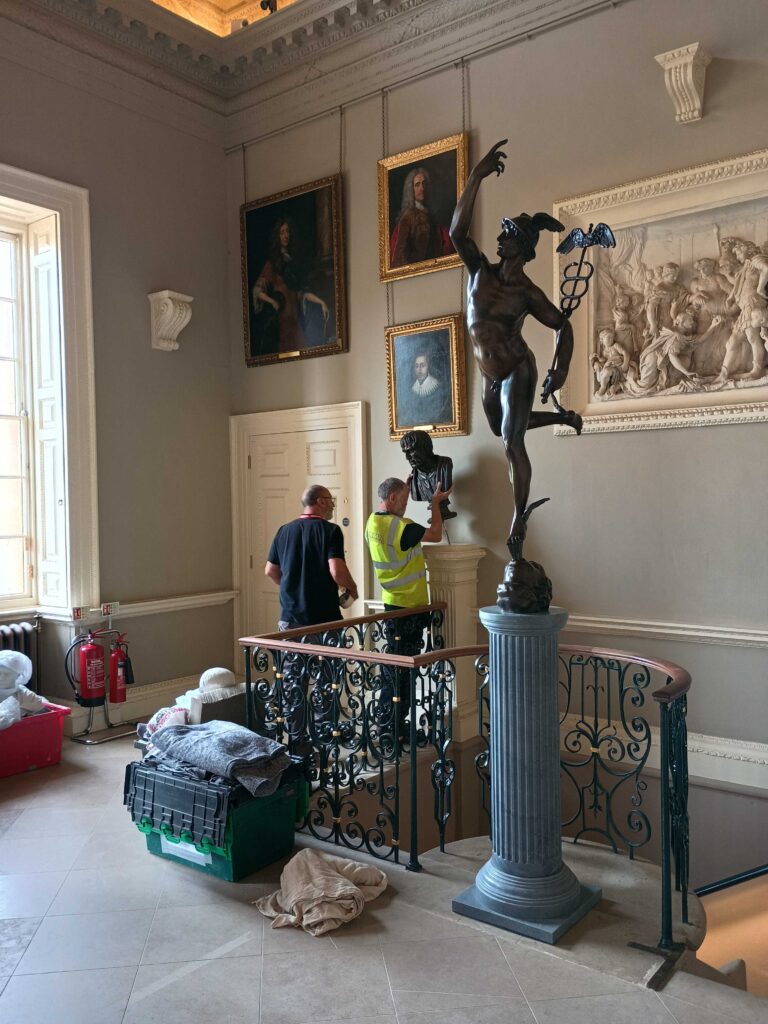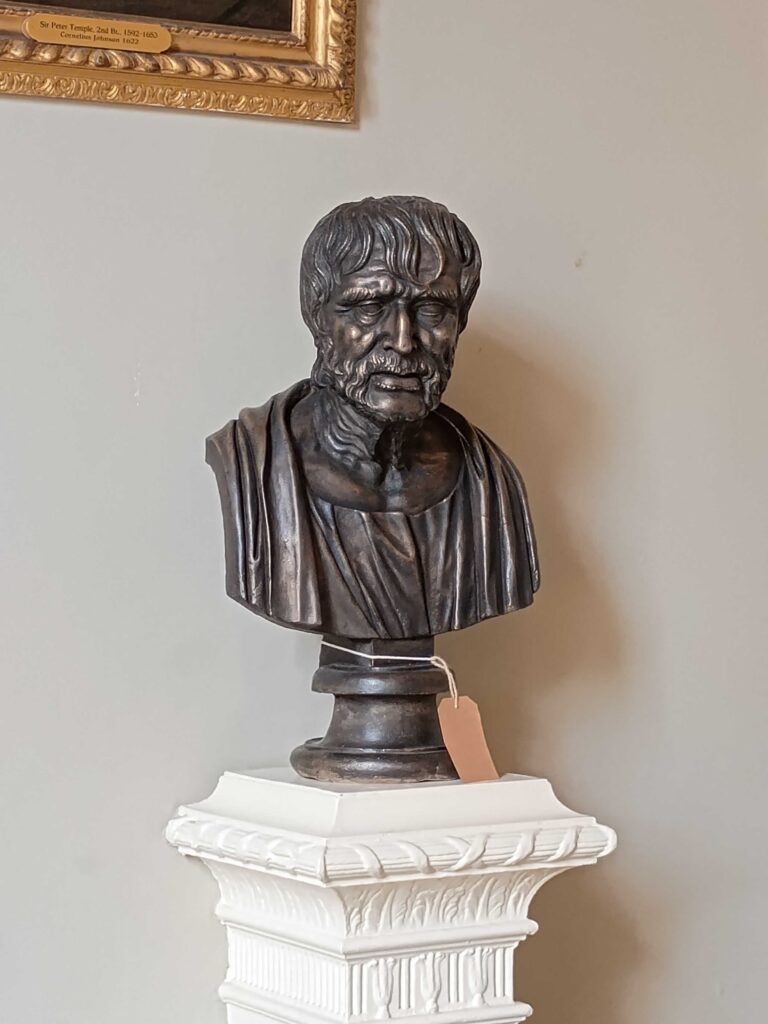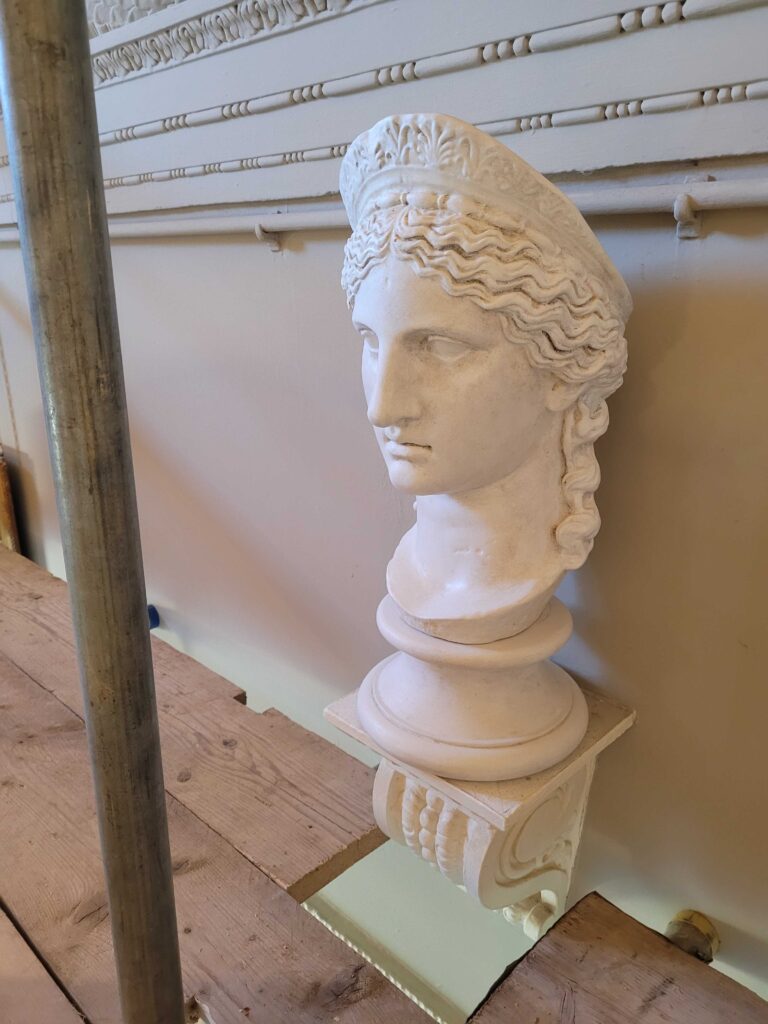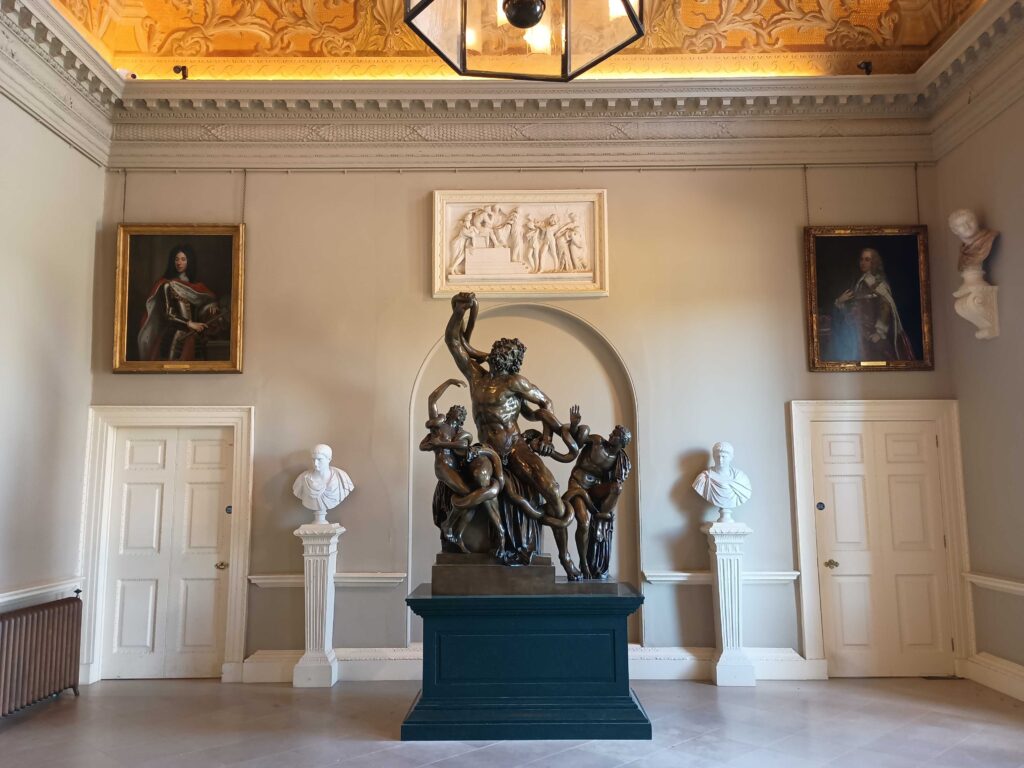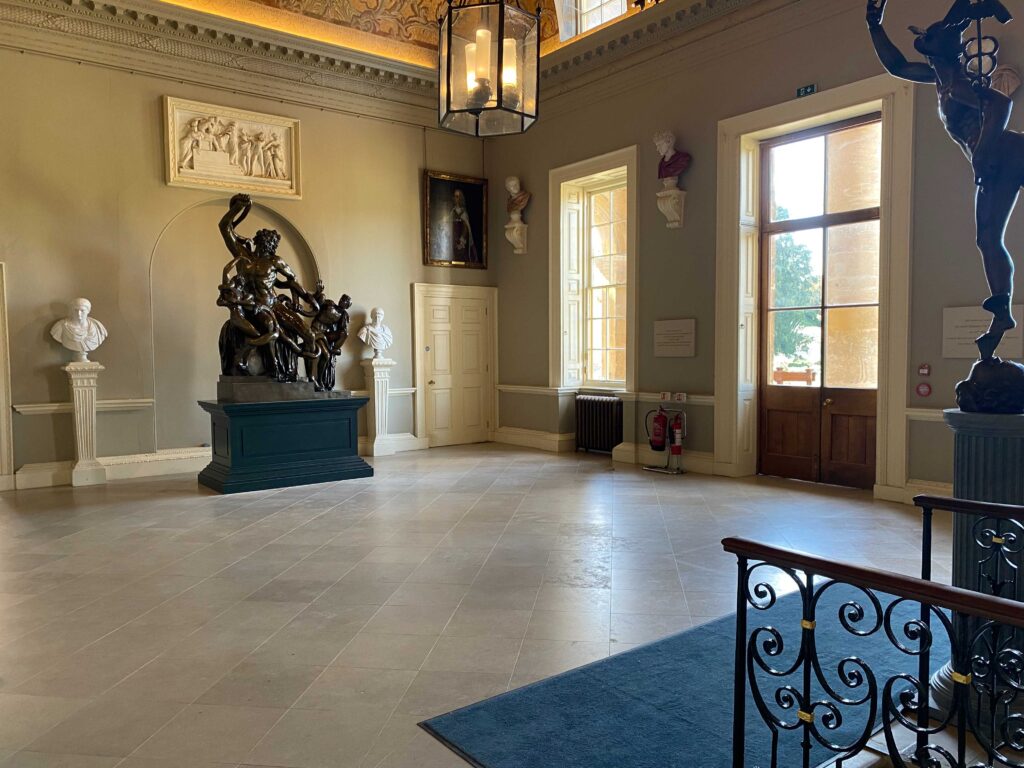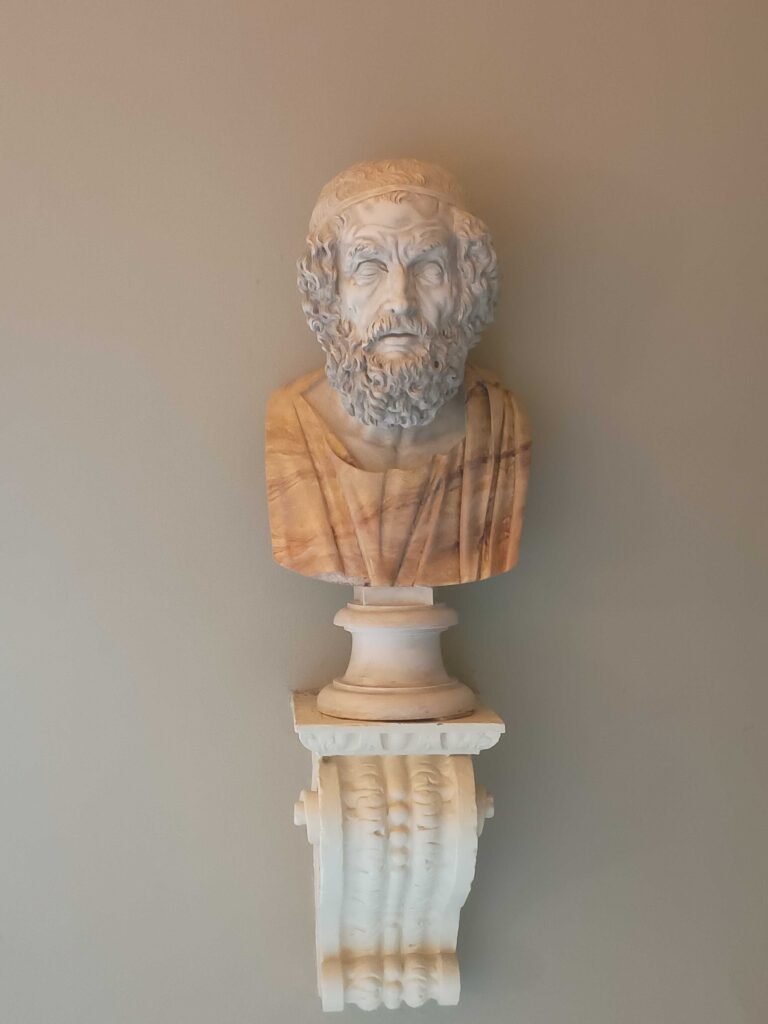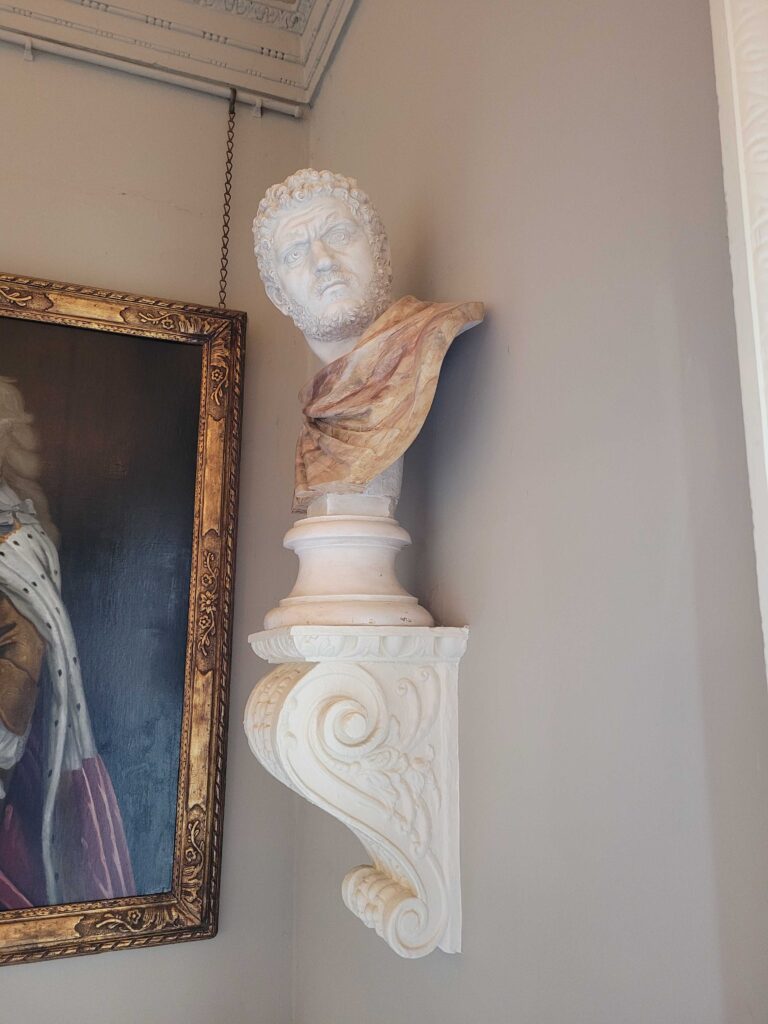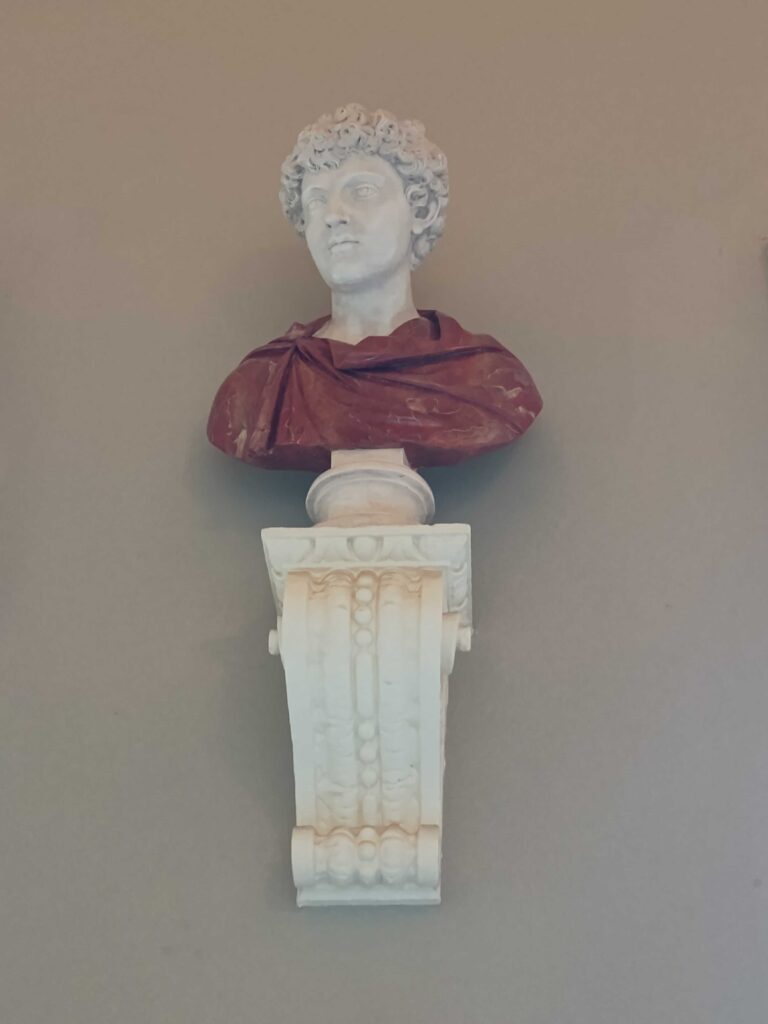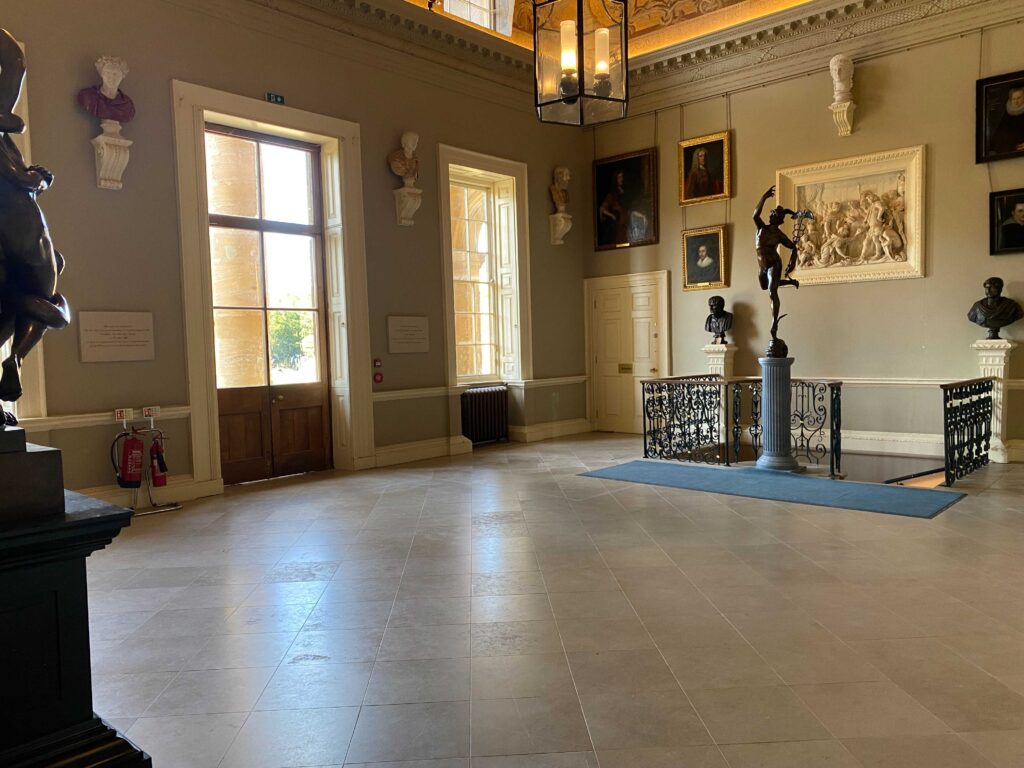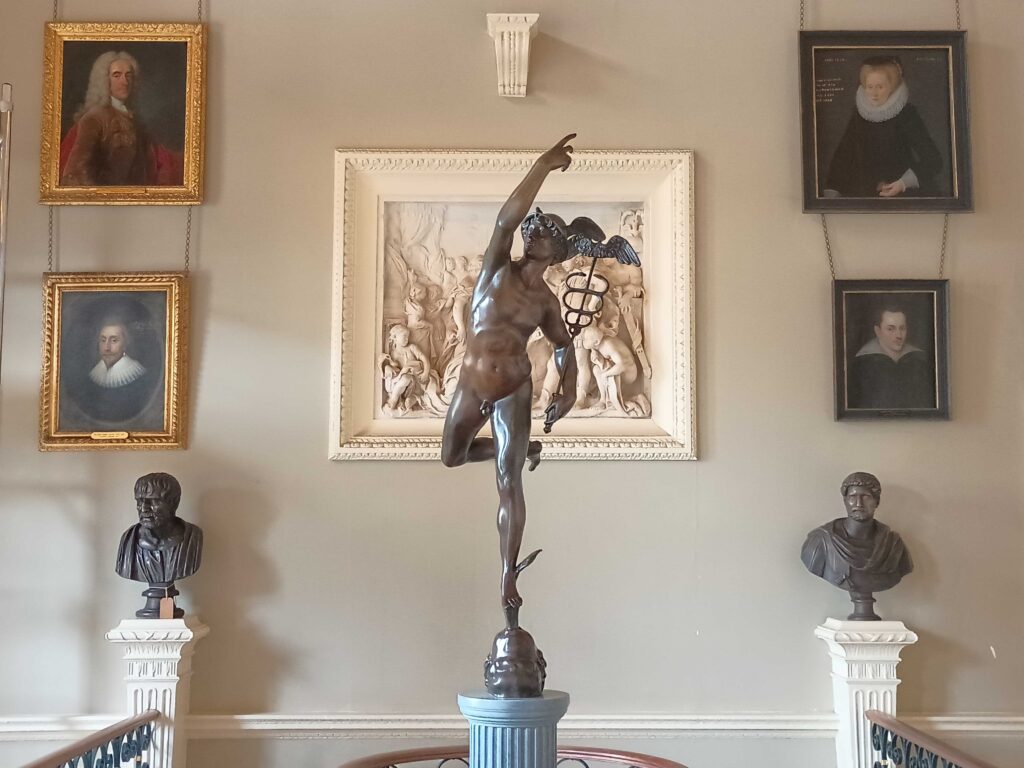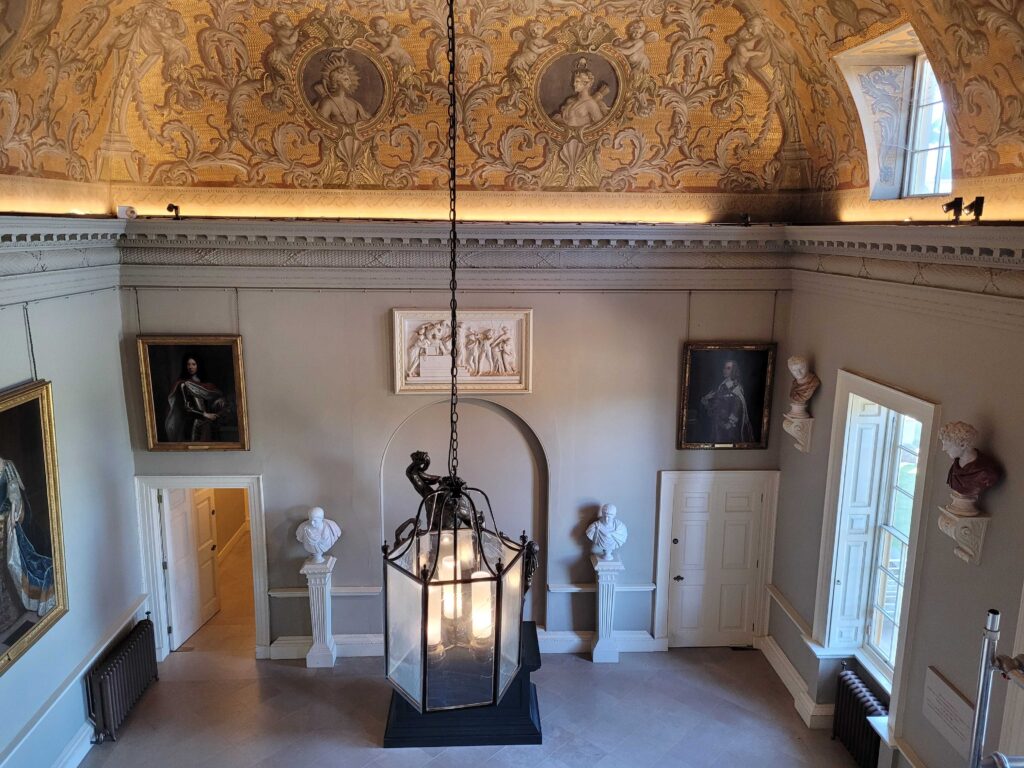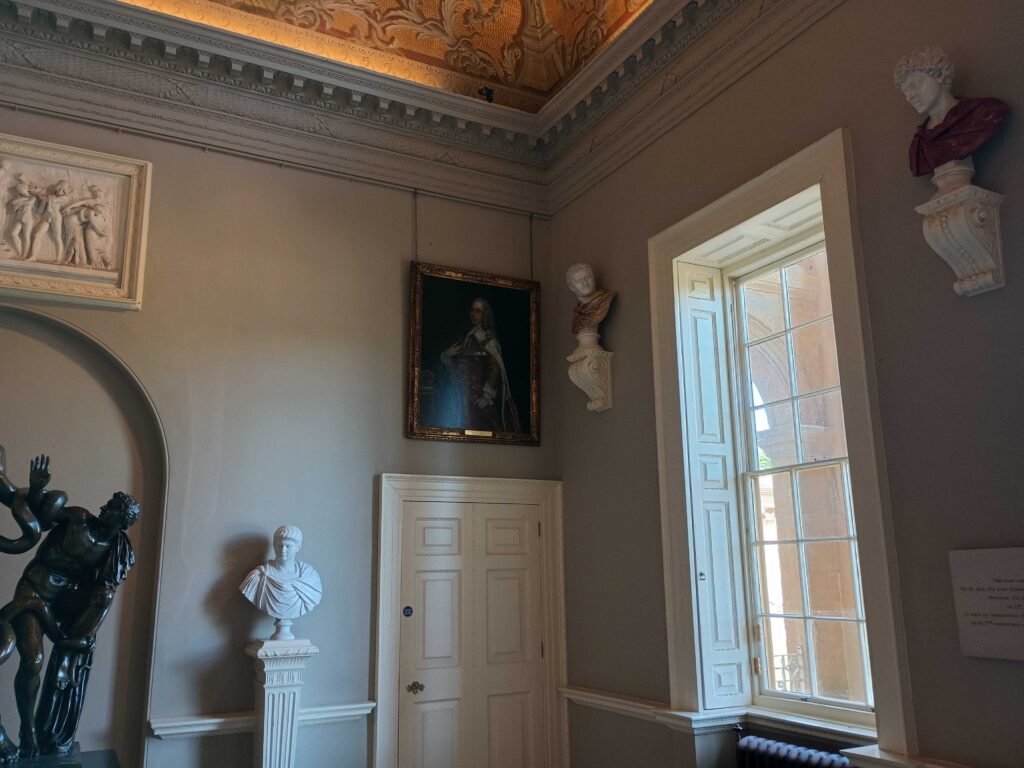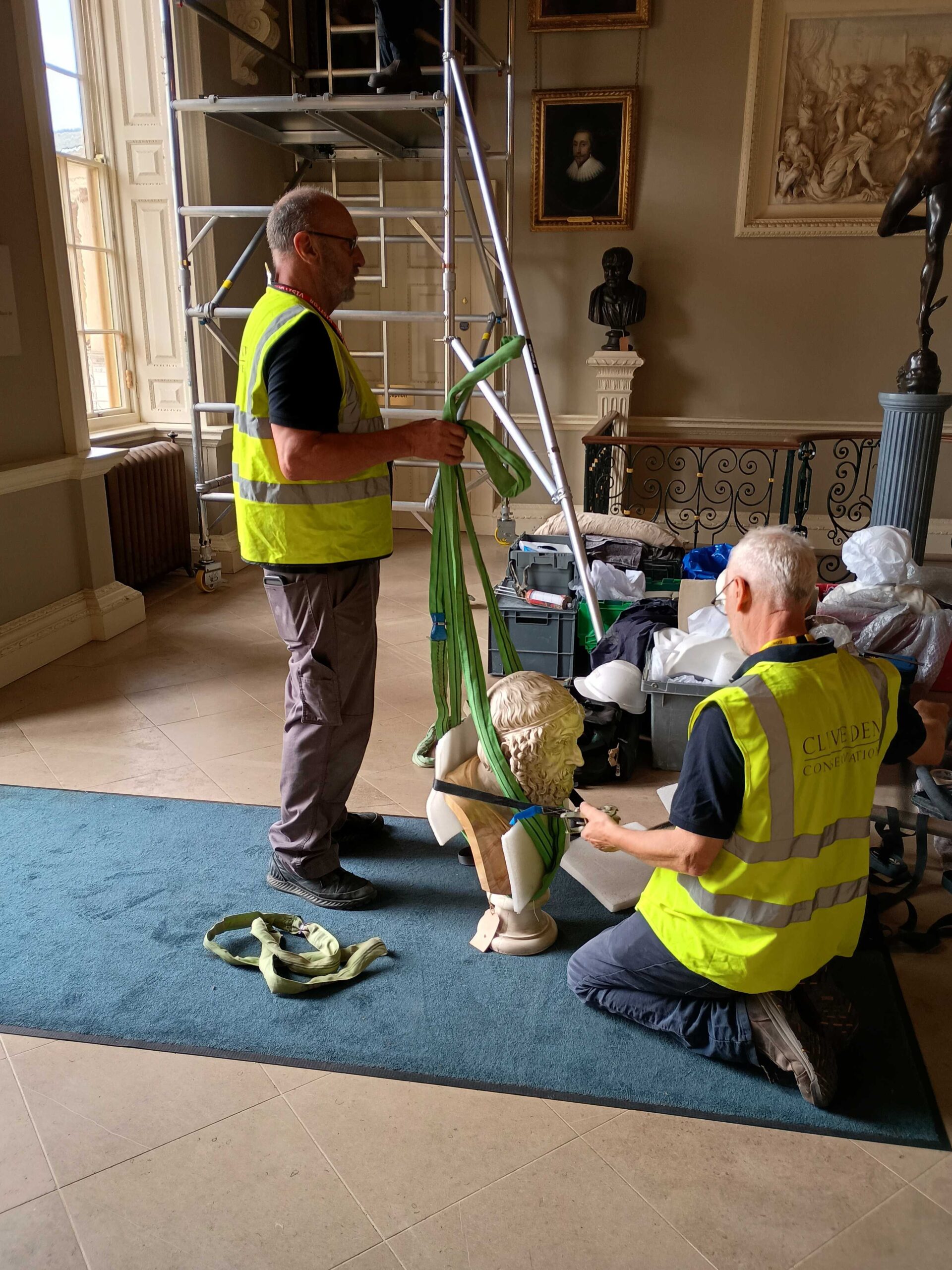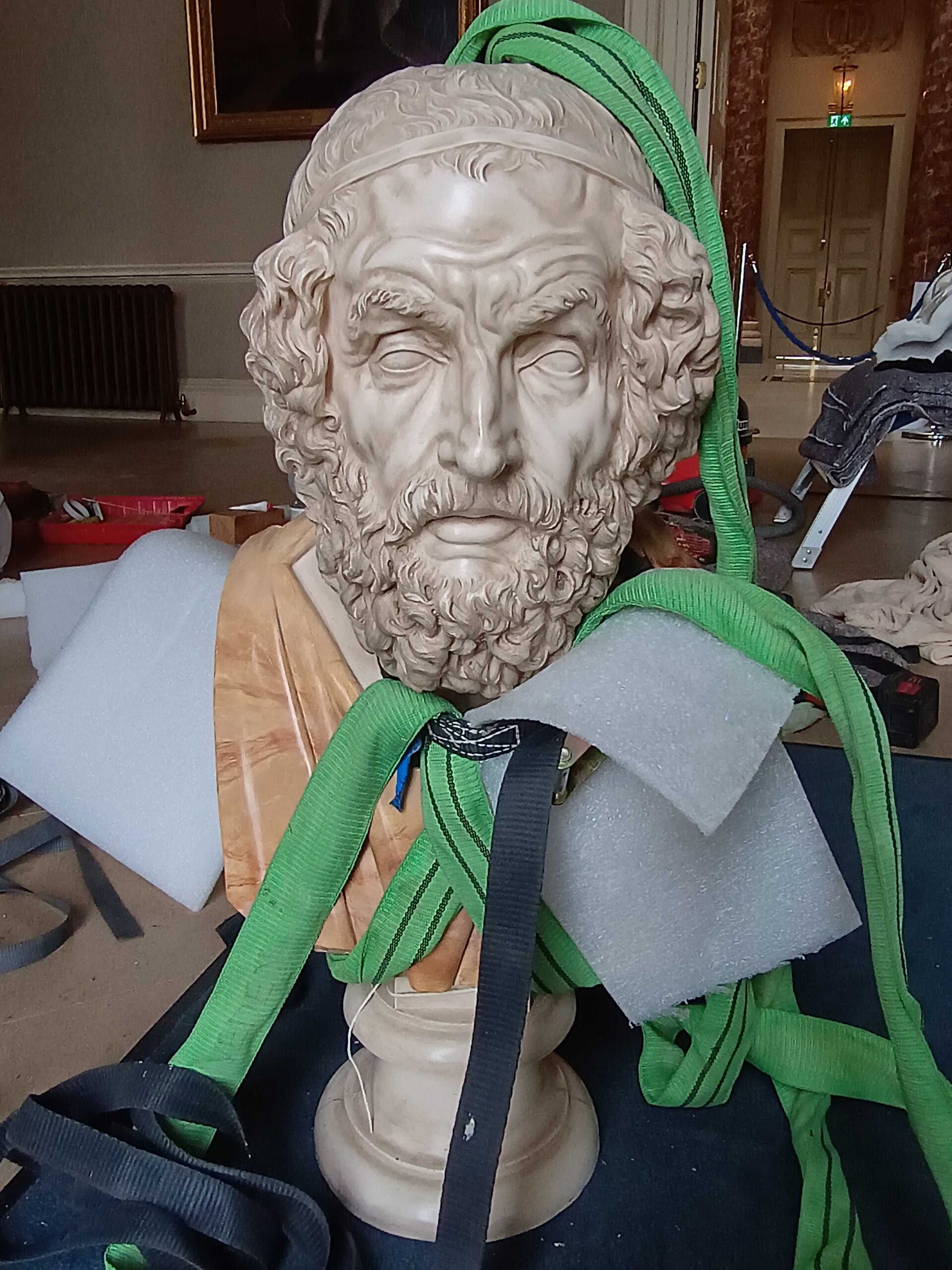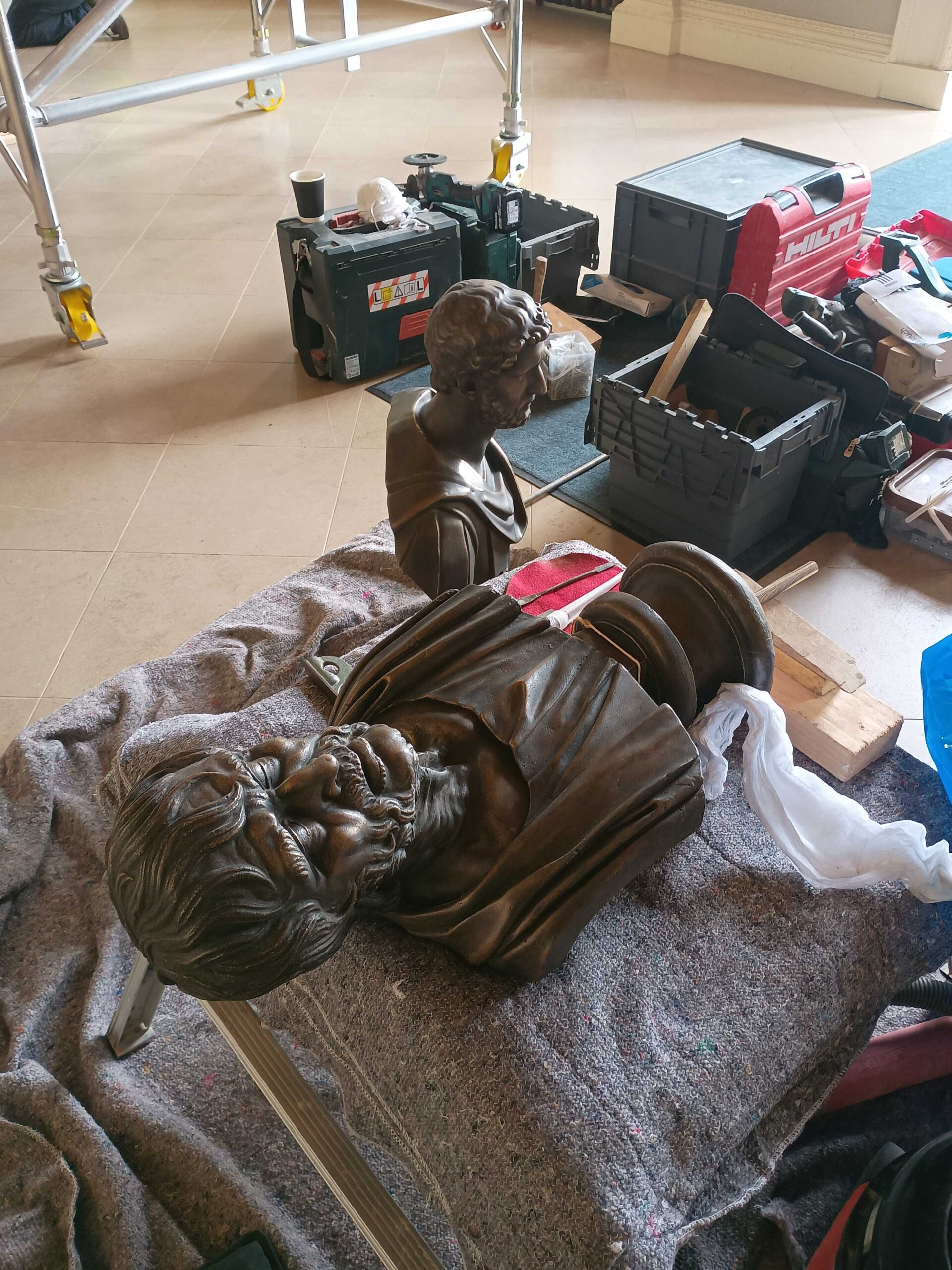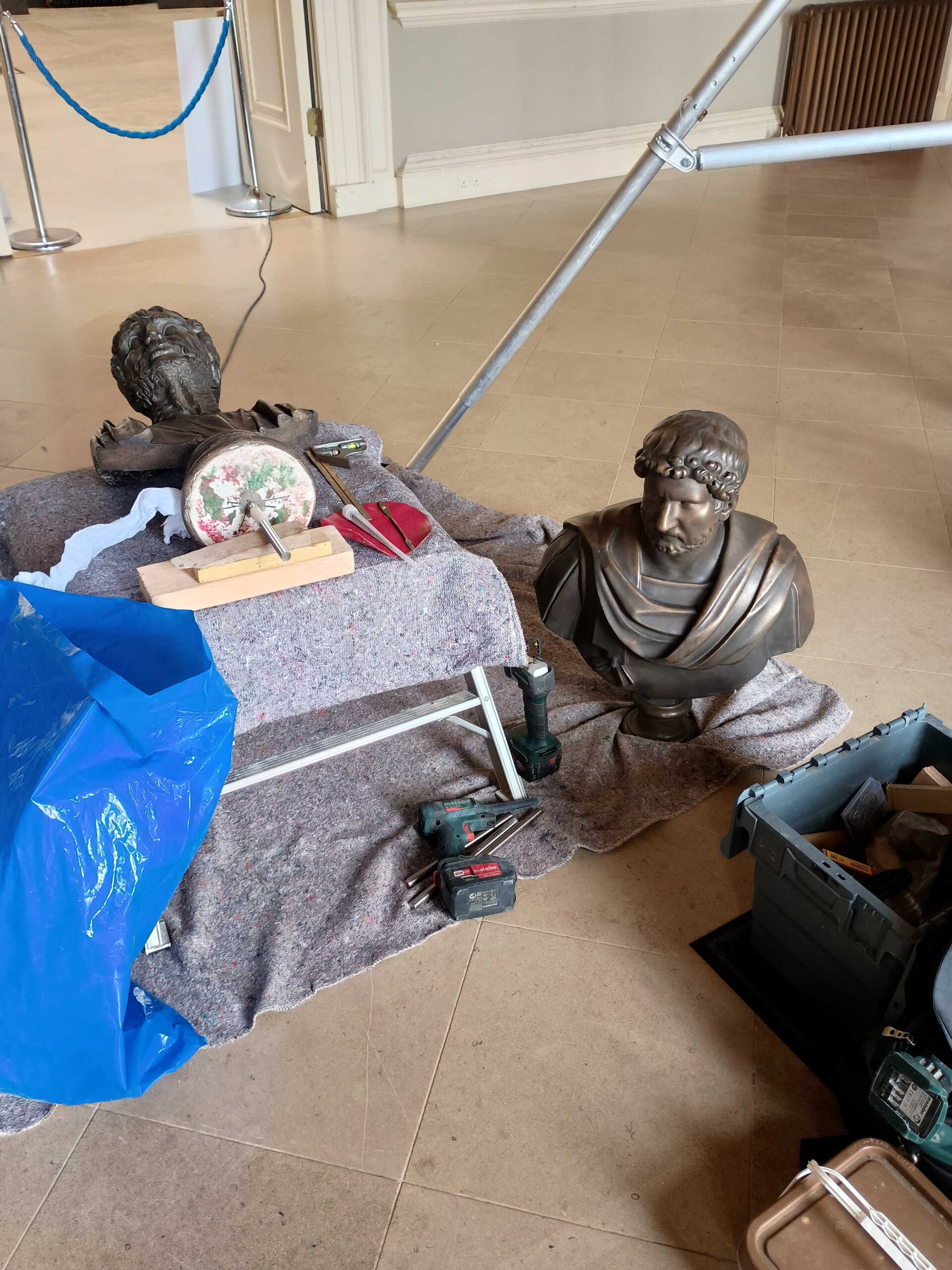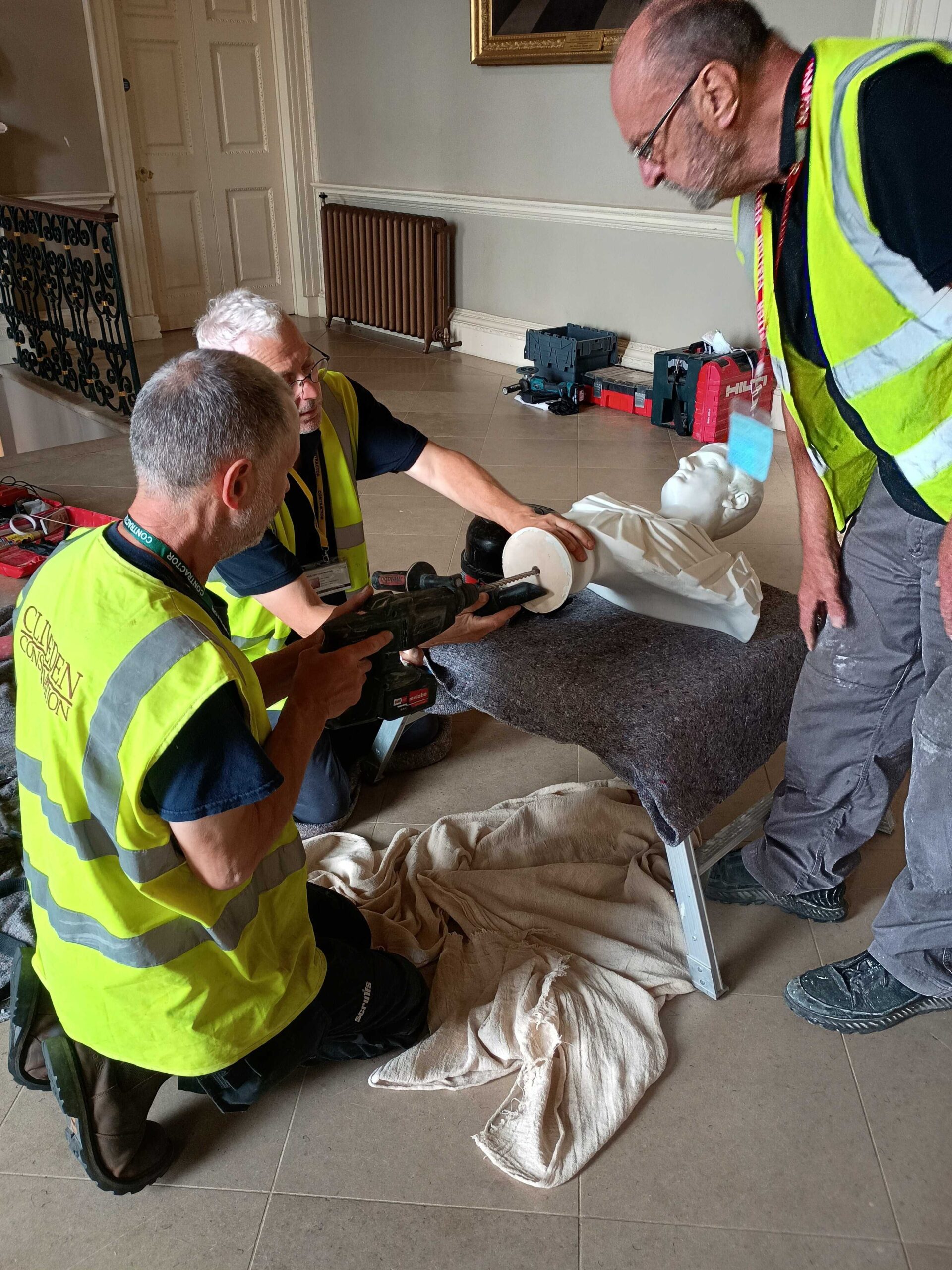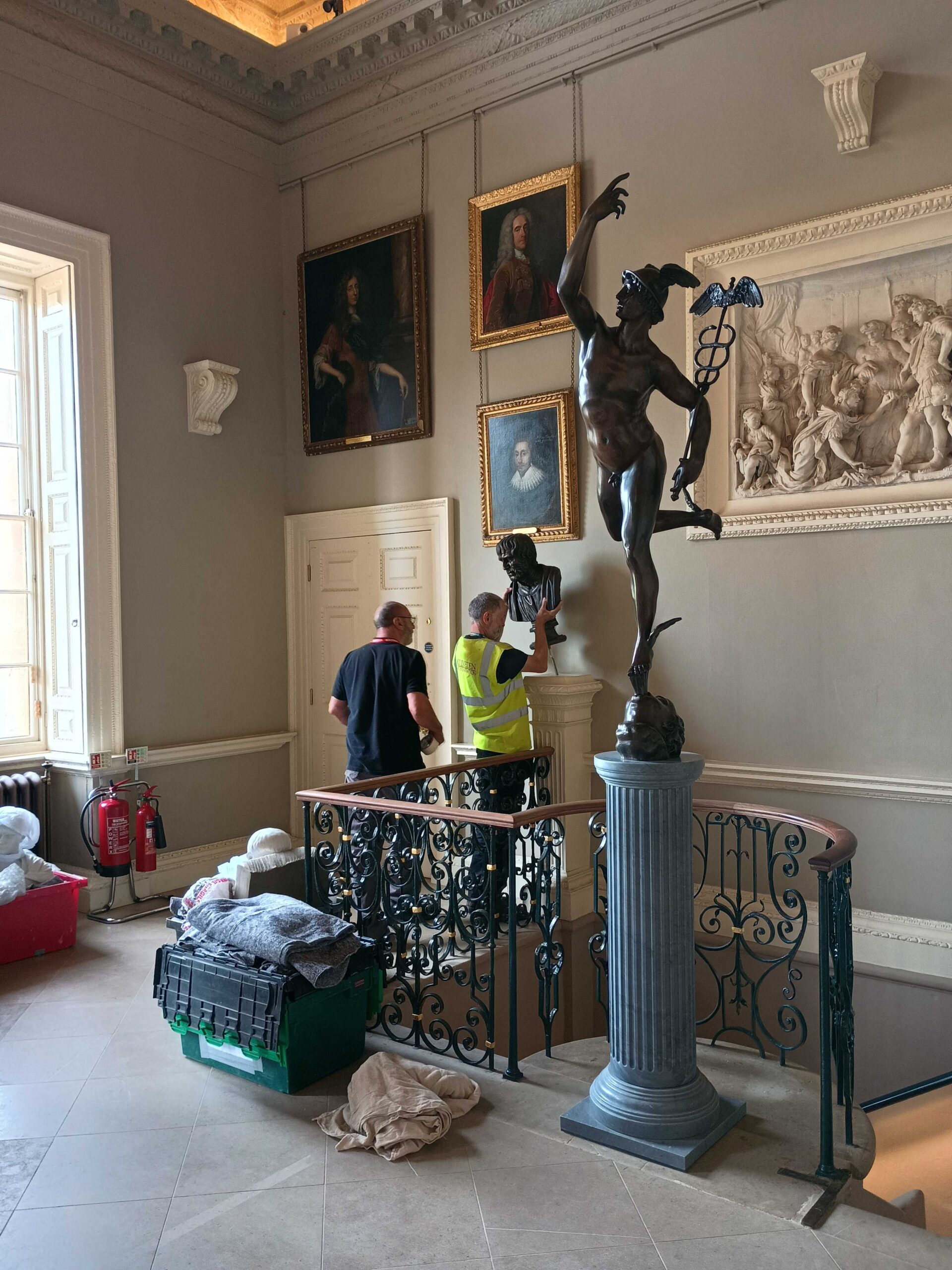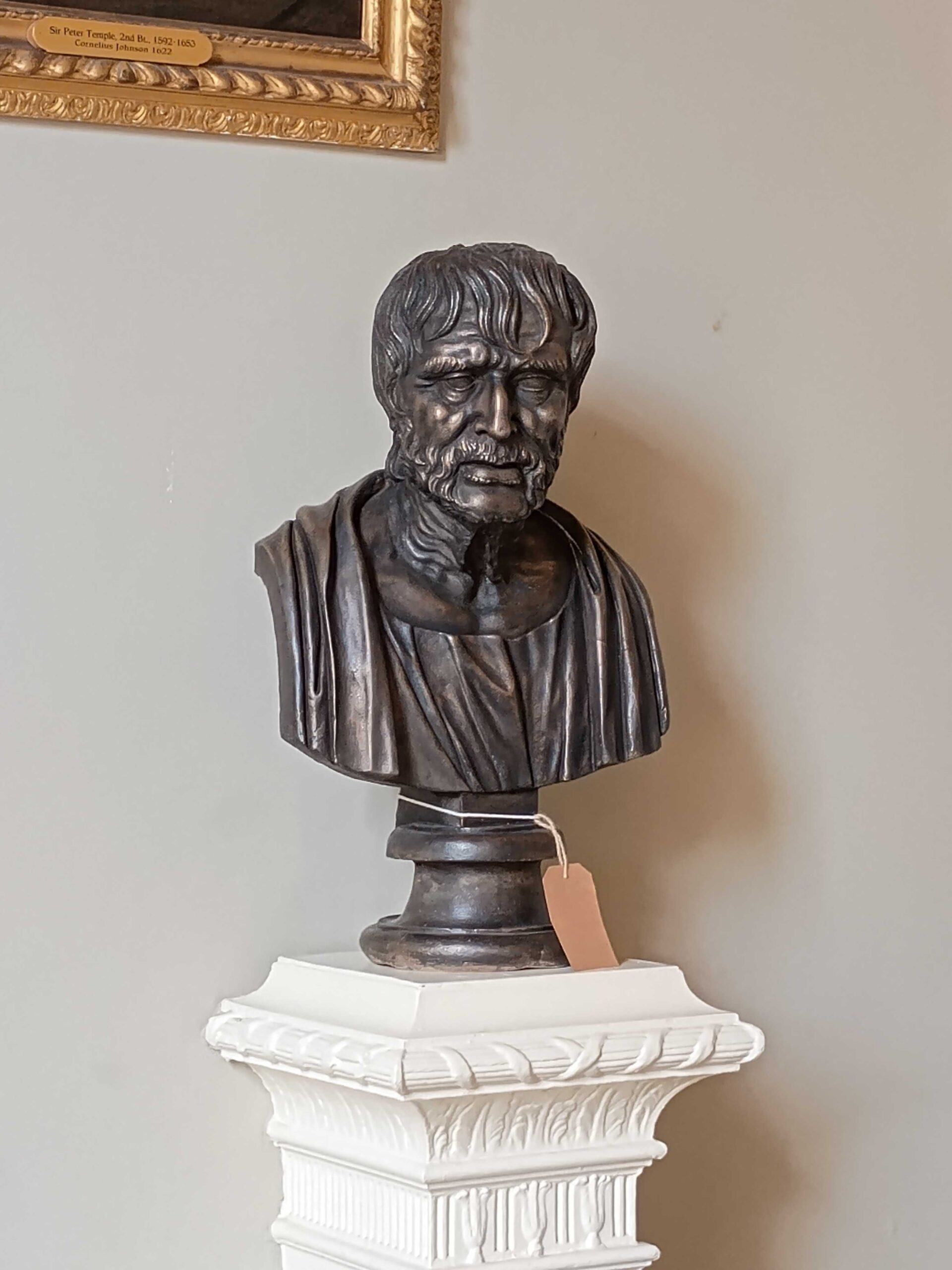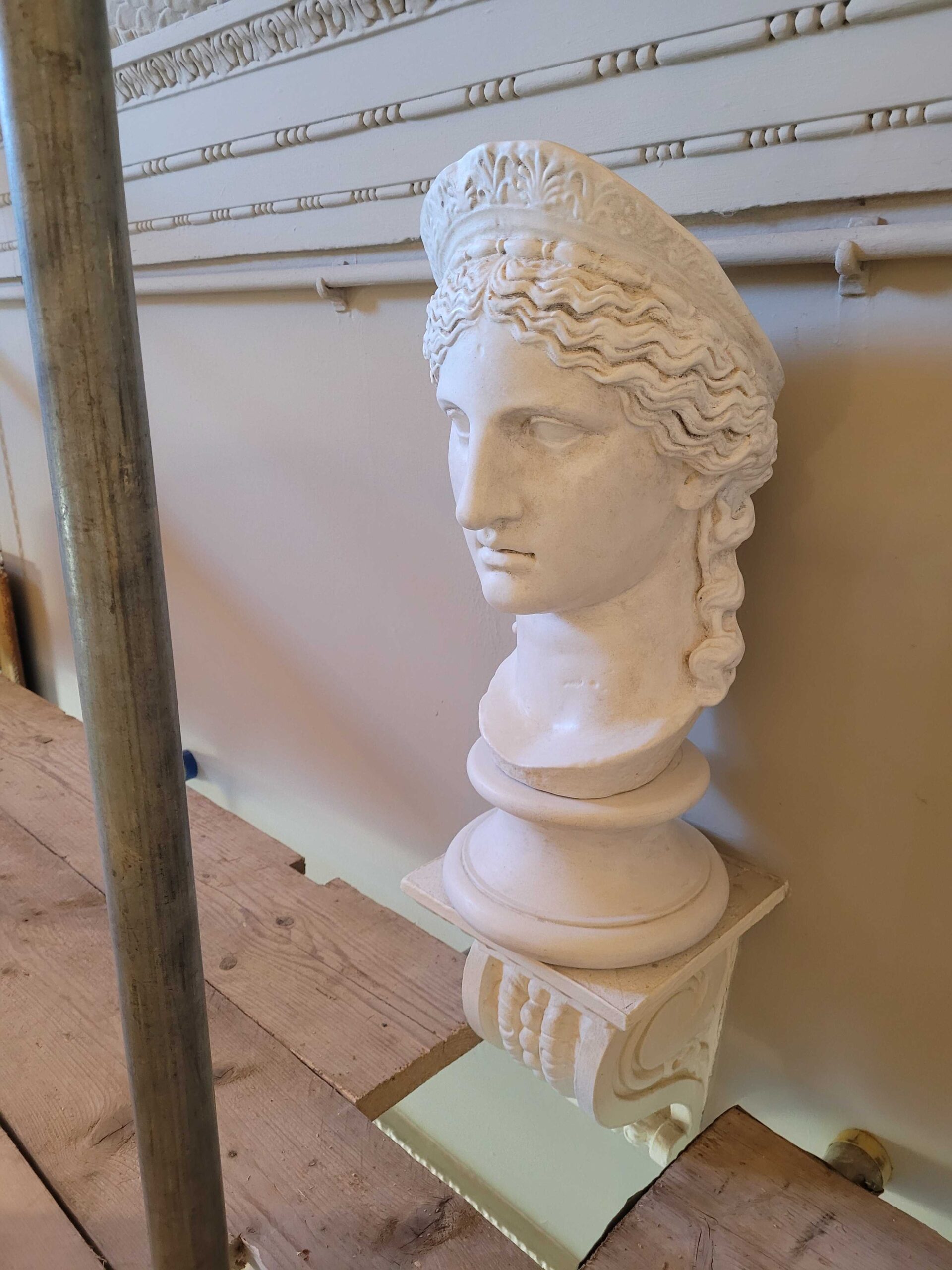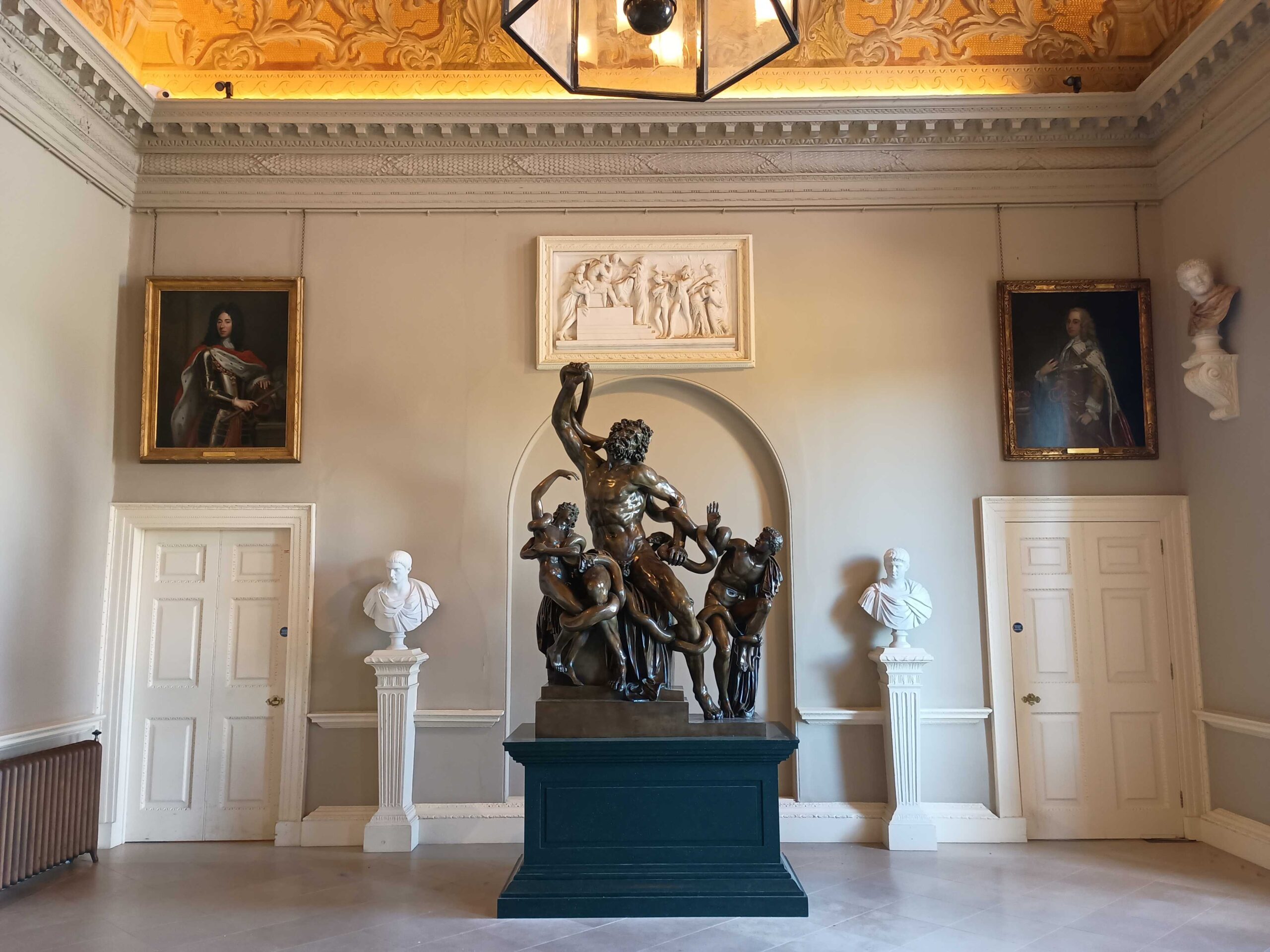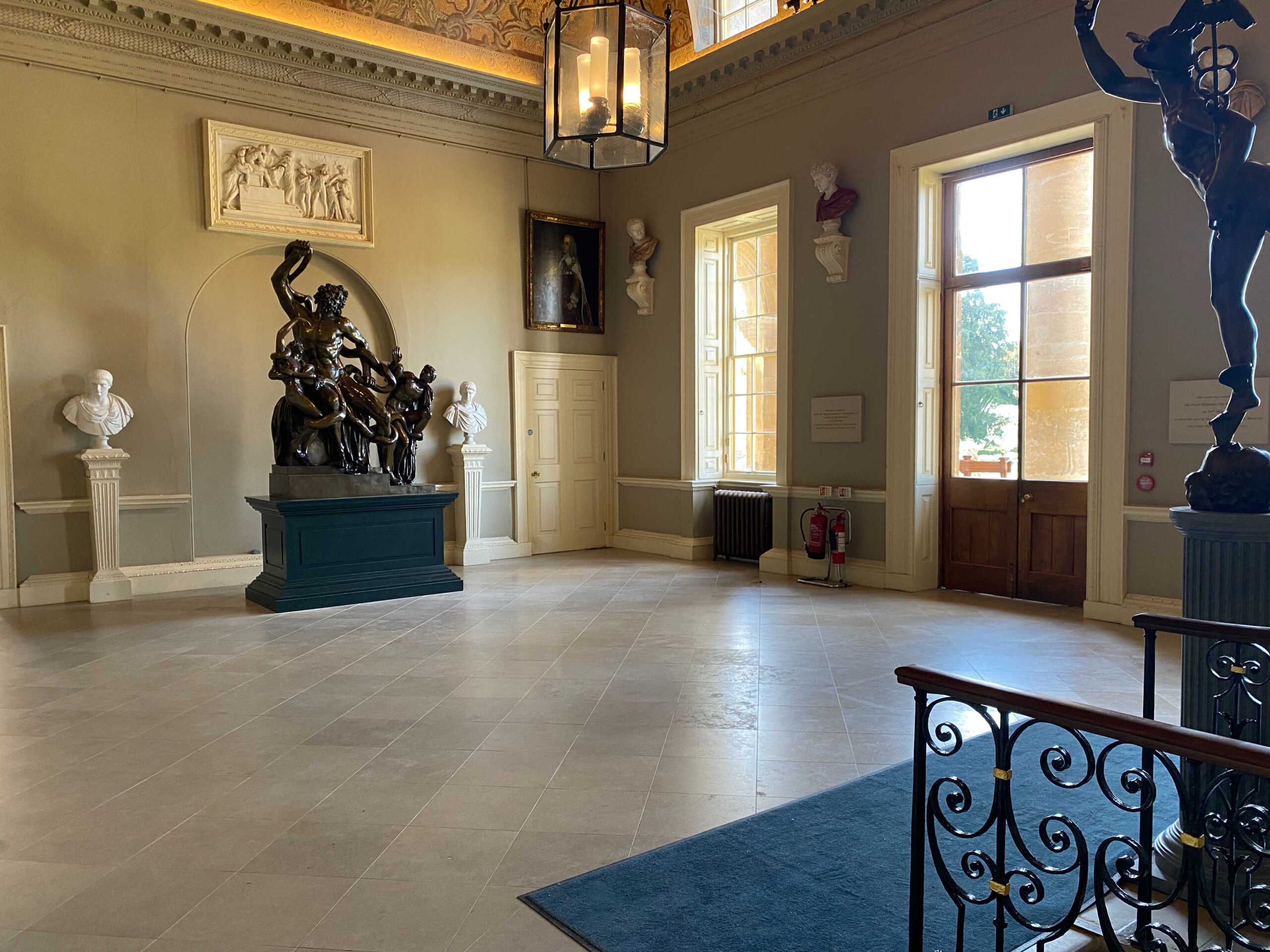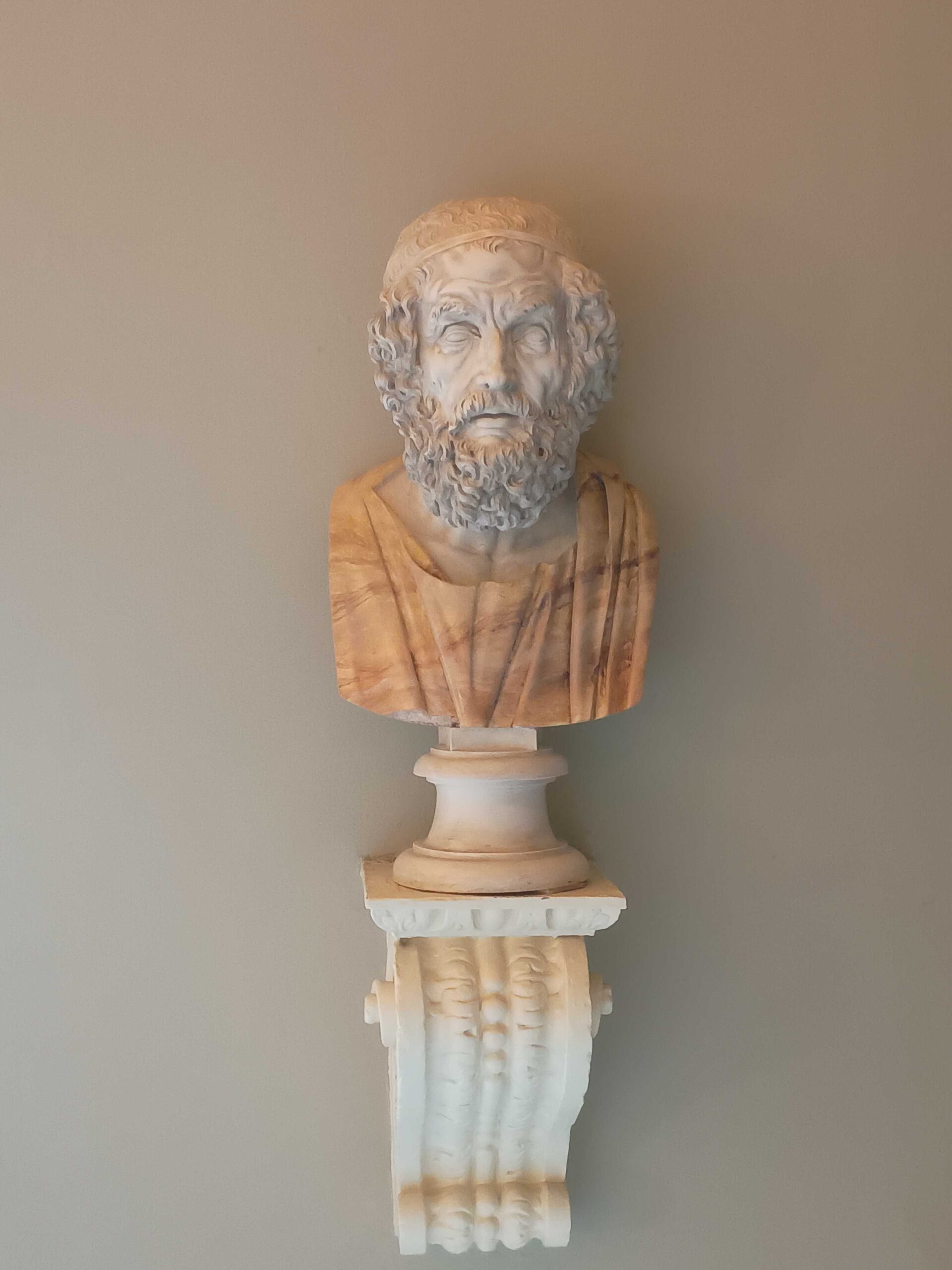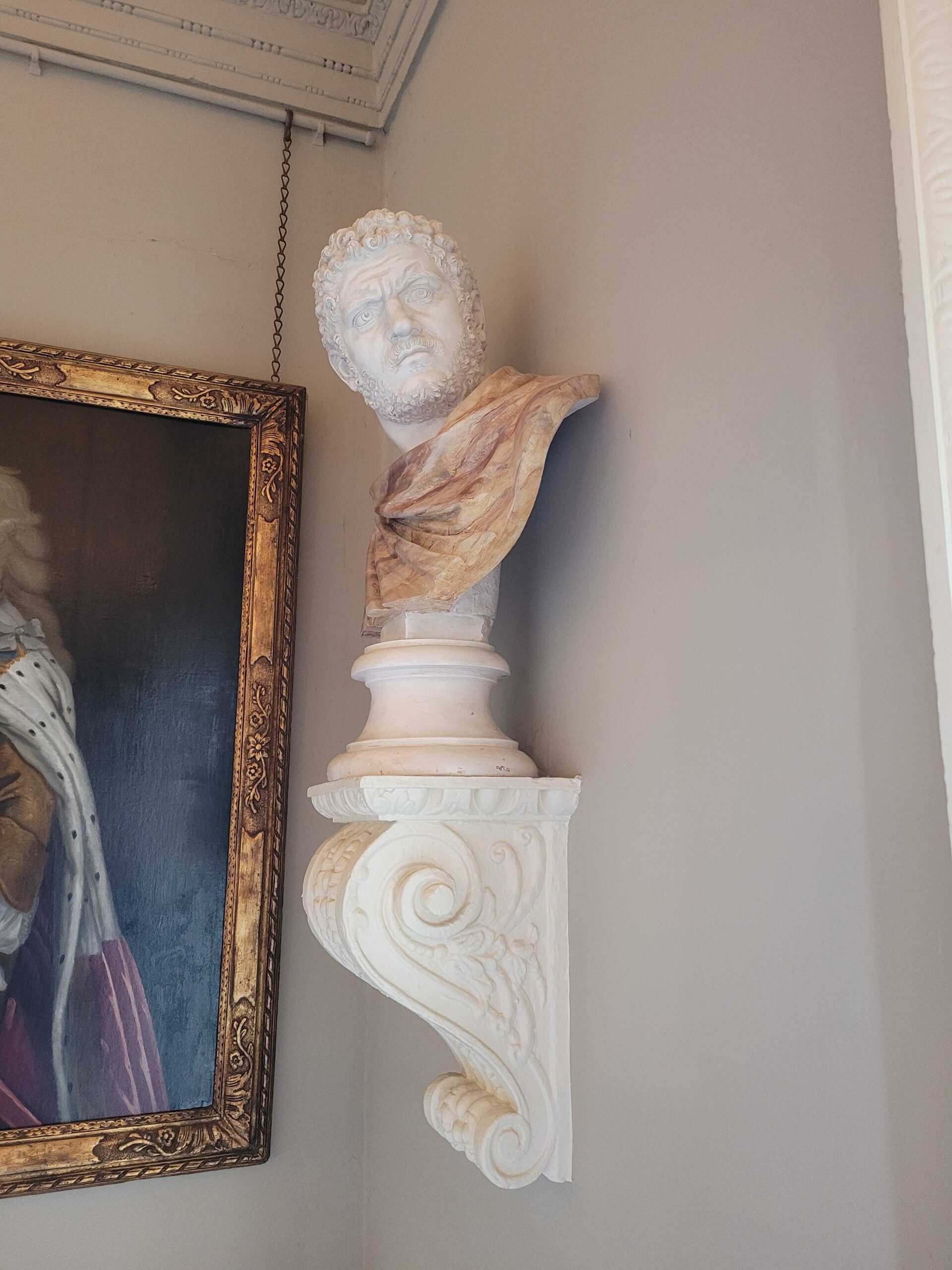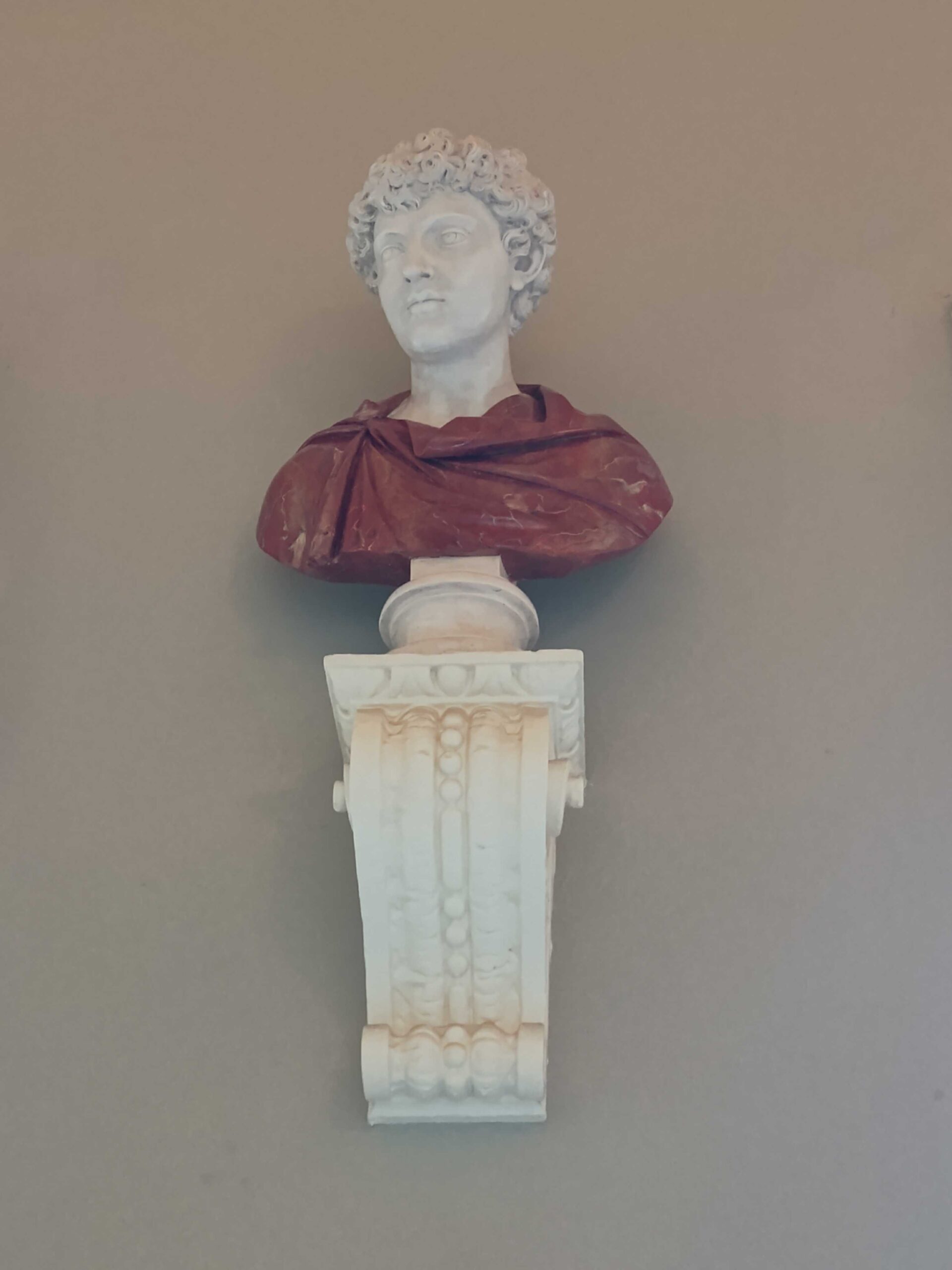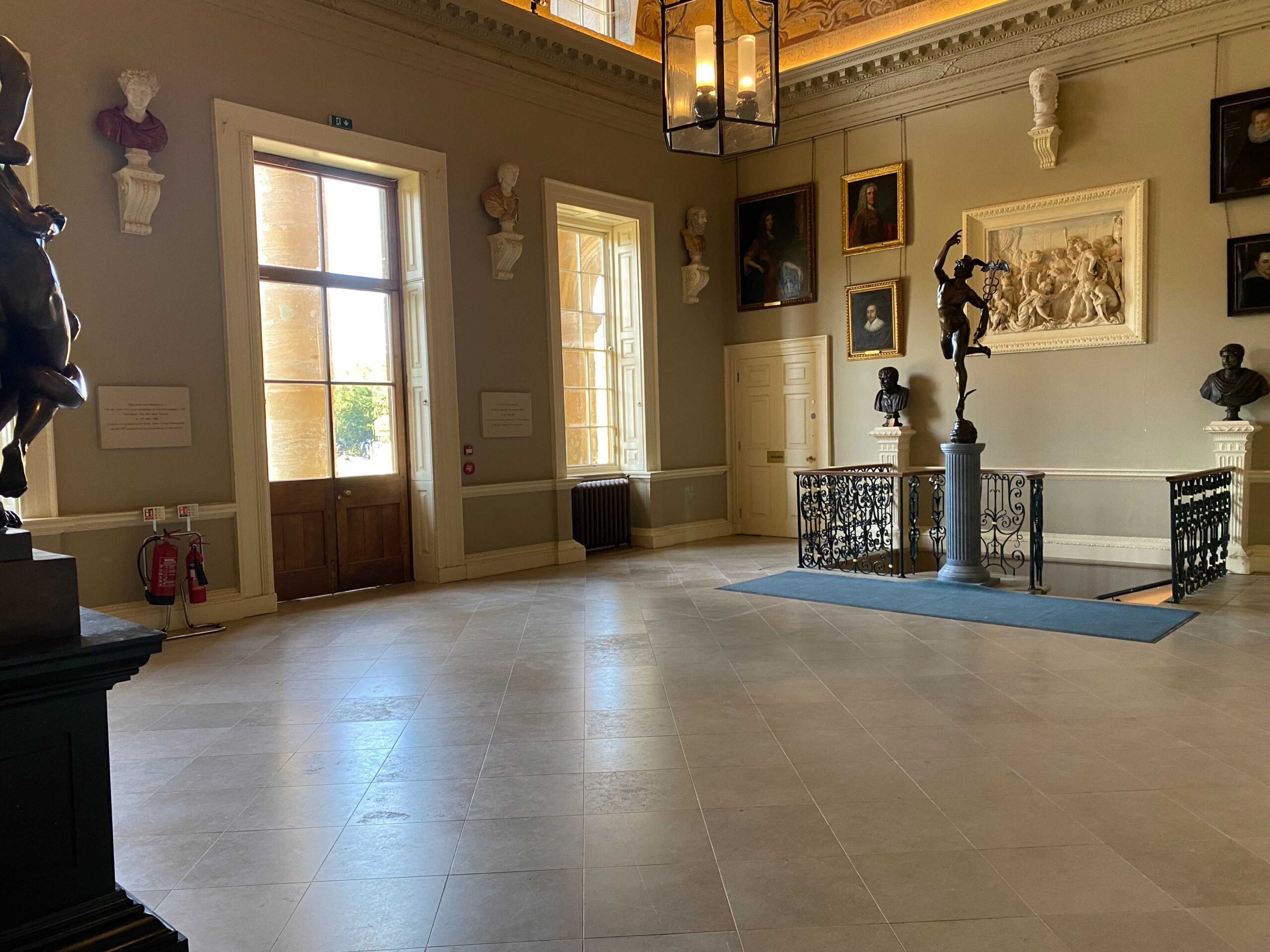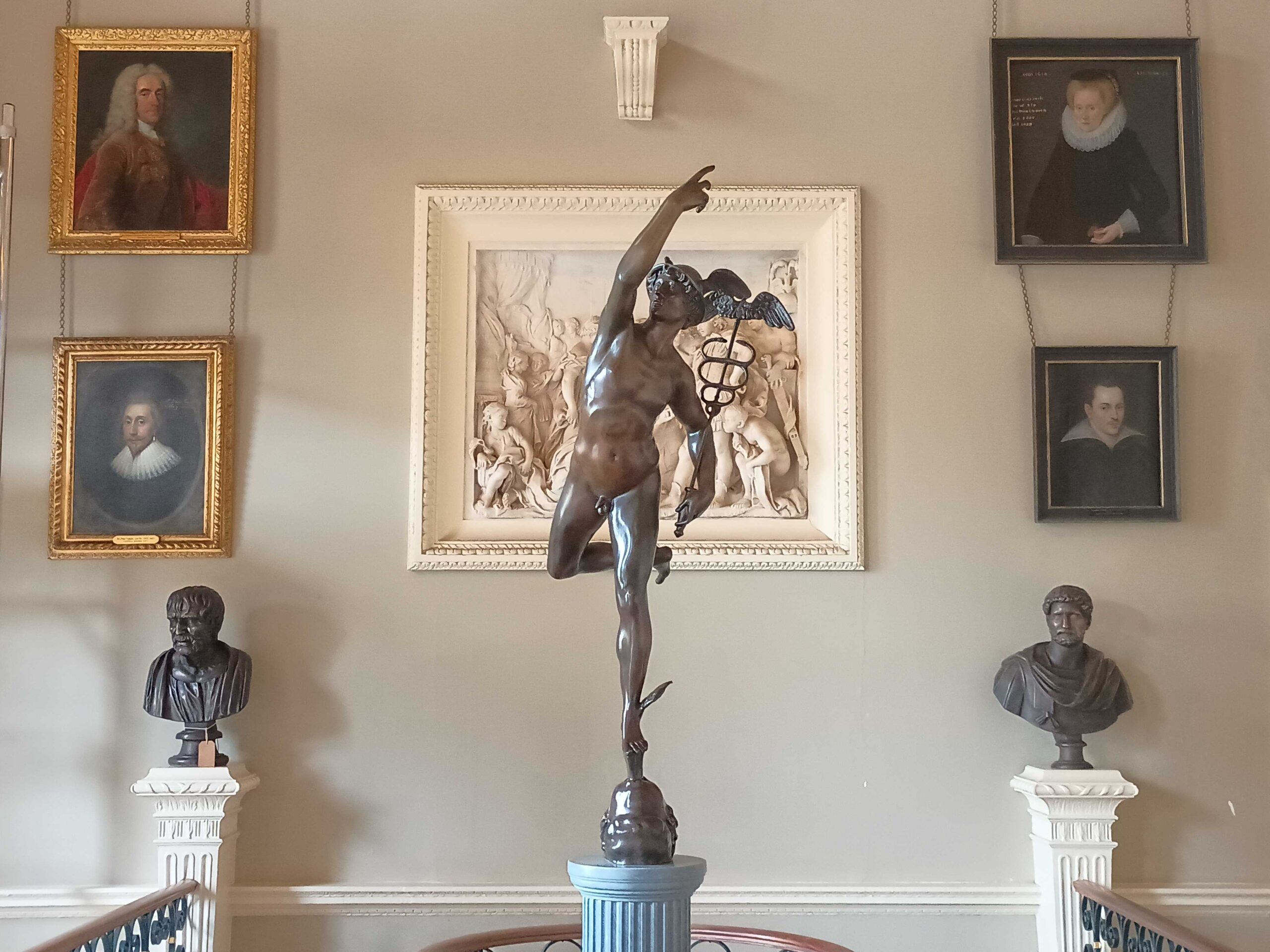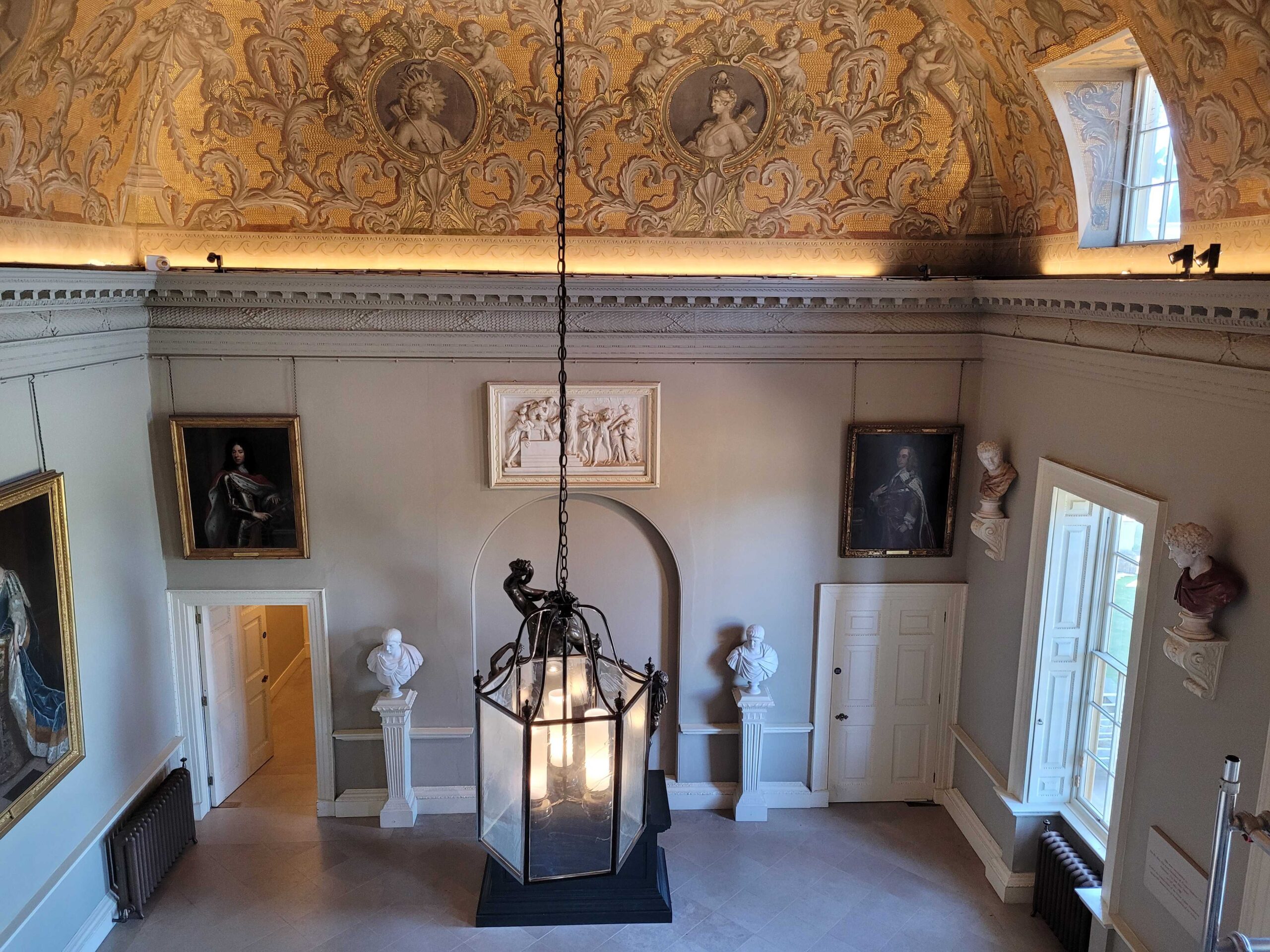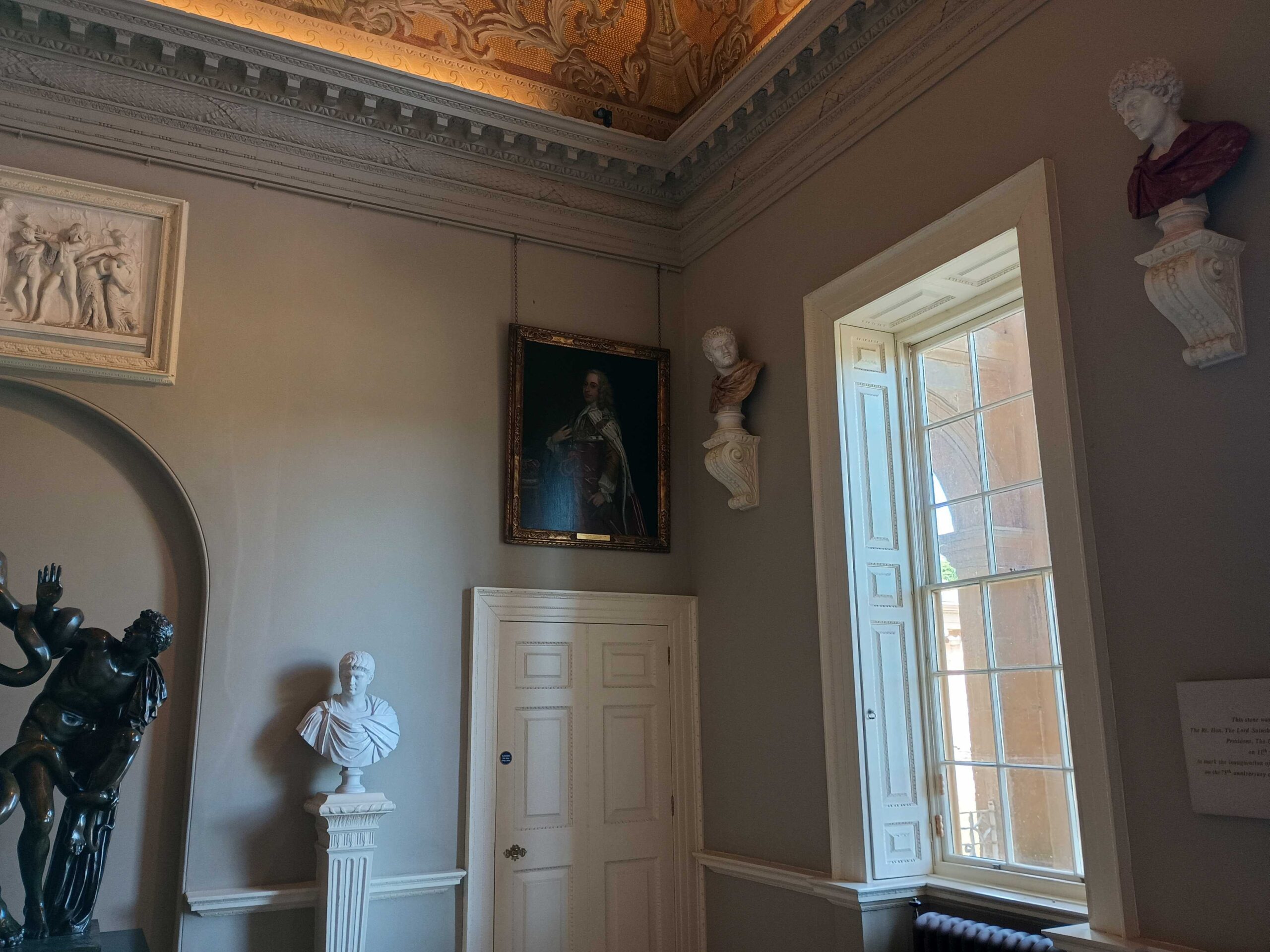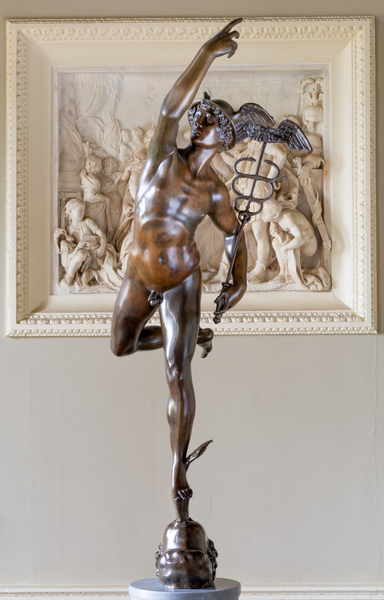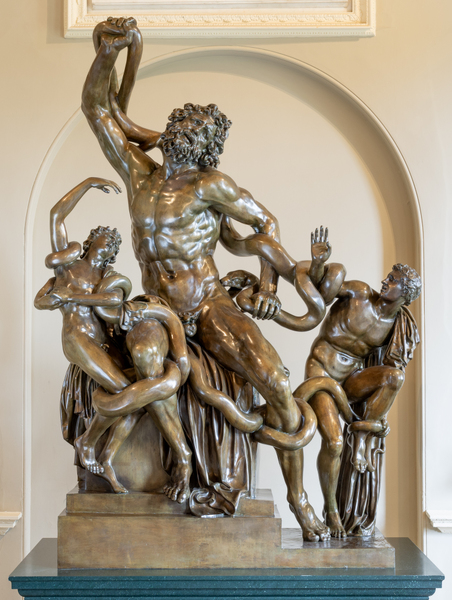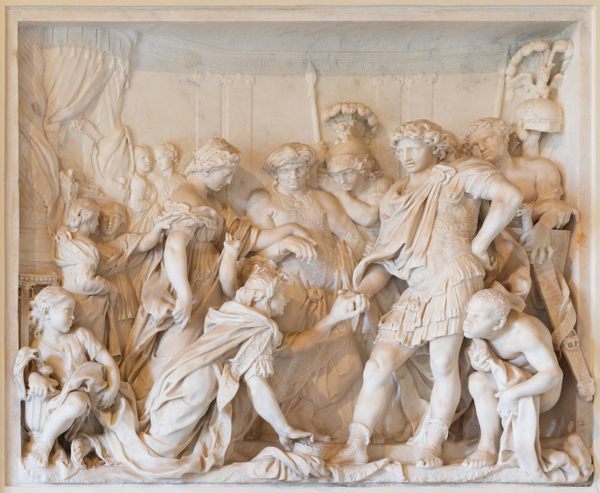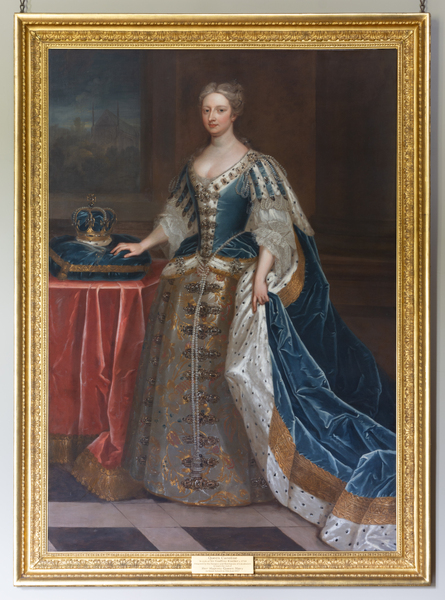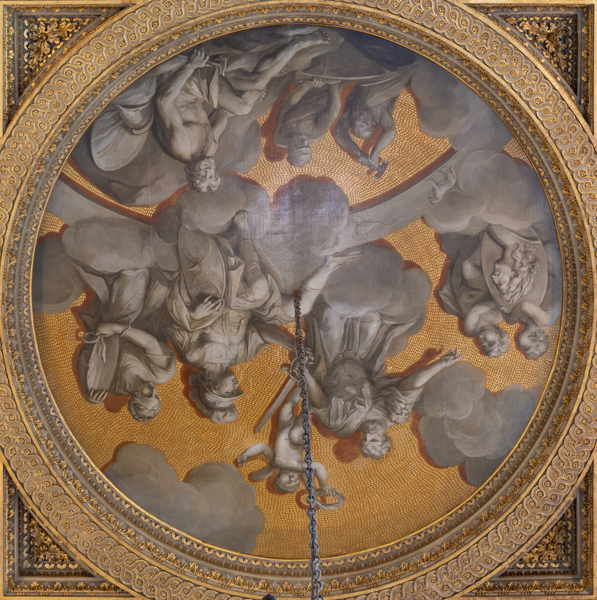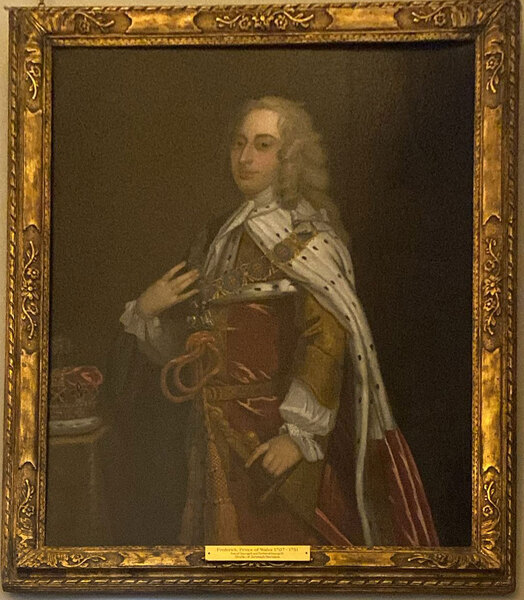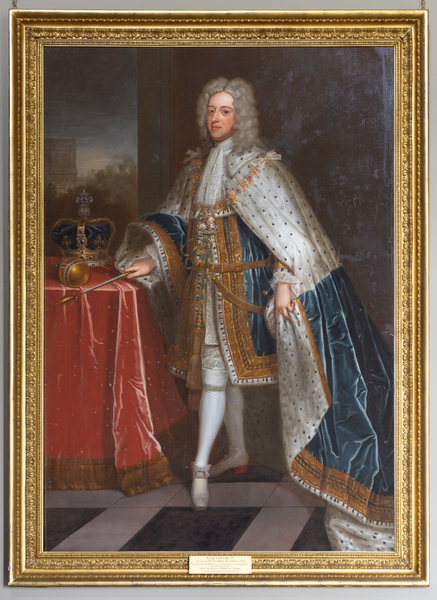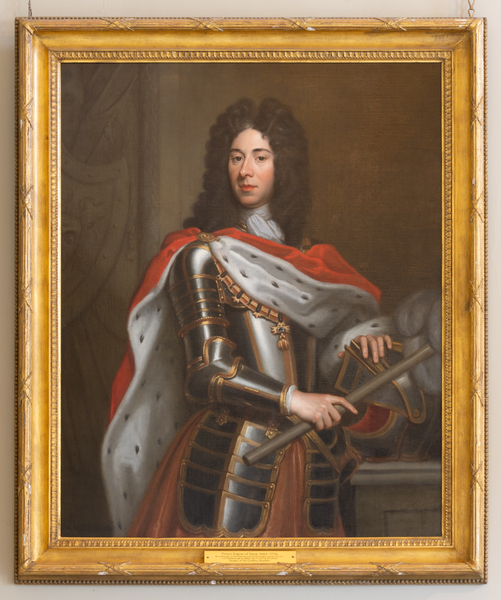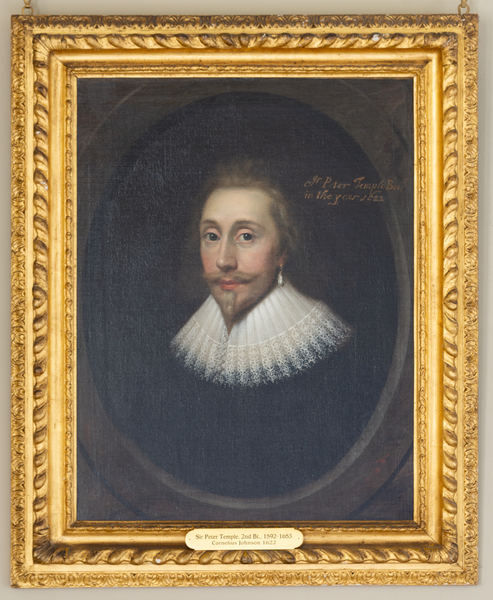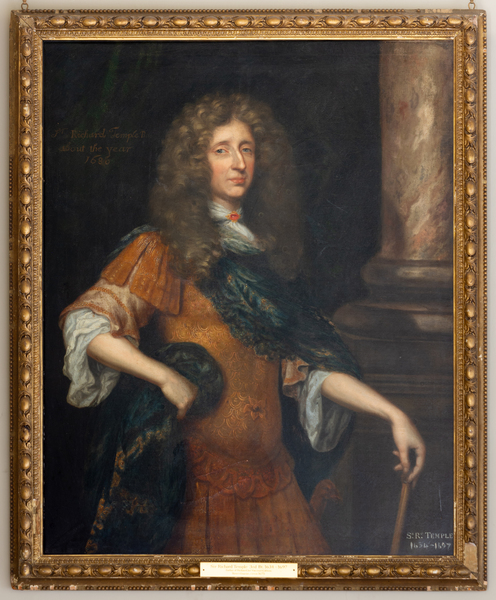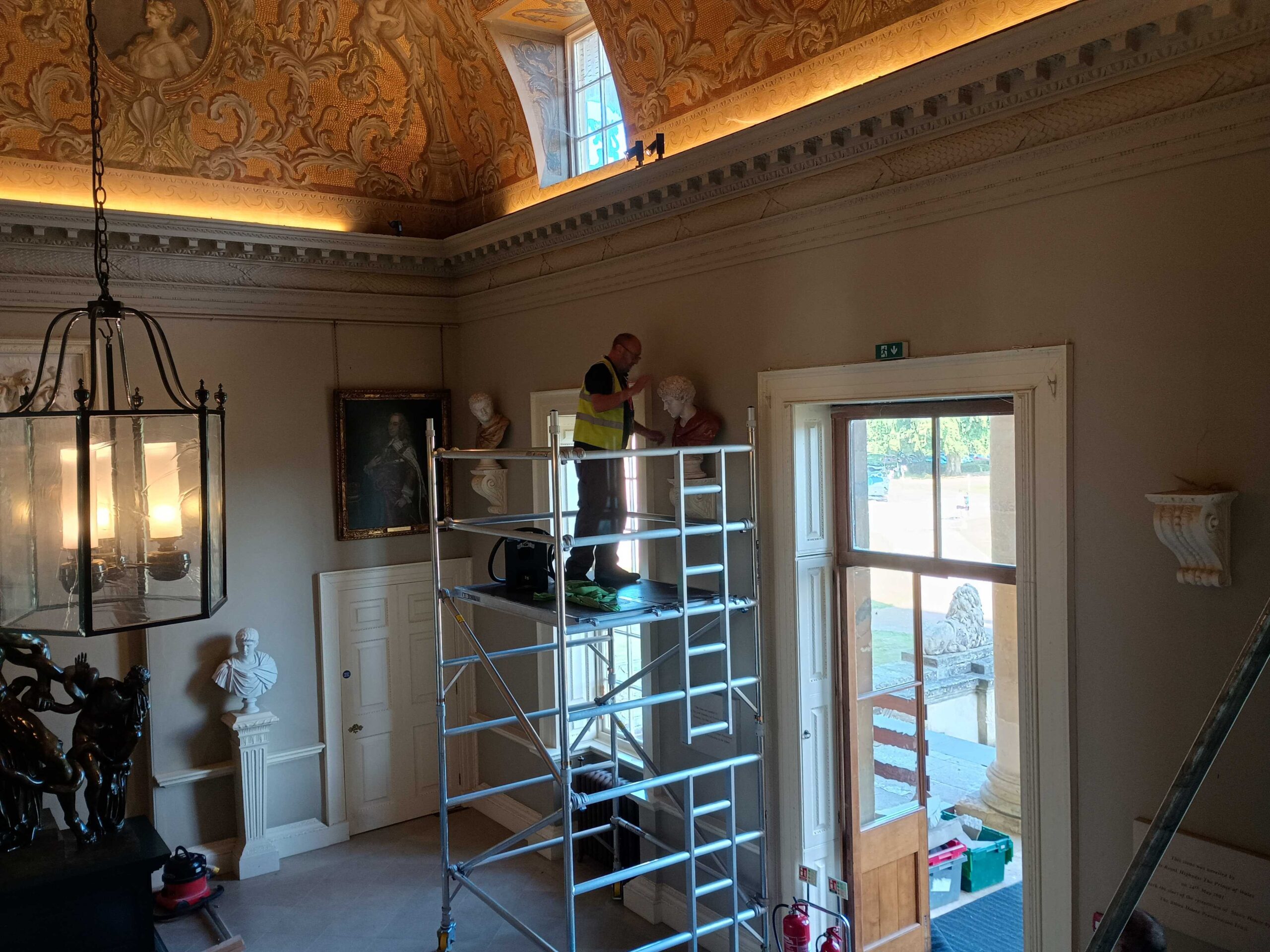
Classical Busts Return to the North Hall
Six Years In The Making
After six years of meticulous conservation, Stowe House’s North Hall is now complete. The final touch — nine newly commissioned classical busts — restores the room’s 18th-century splendour. From scanning historic originals to hand-painting each bust in lifelike marble and bronze finishes, this £75,000 project marks the triumphant conclusion to one of the most ambitious restoration efforts in the house’s history.
The Project
Stowe House is celebrating the completed restoration of the North Hall, a grand reception room originally designed in the 1730s by the renowned architect and designer William Kent. As the finishing touch to a multi-phase restoration, nine newly commissioned busts have been installed to reinstate the classical splendour of the space. The project, which has taken six years and an estimated £75,000 to complete, is now open for the public to enjoy.
How Did it Come About?
The initial phase of the North Hall’s restoration took place between 2015 and 2018, focusing on the conservation of Kent’s gilded ceiling and original canvas paintings. This was followed by the replication and reinstatement of two large bronze statues – Laocoön and Mercury – returning them to their rightful places.
While this work restored around 90% of the Hall’s original grandeur, researchers suspected that additional sculptures had once adorned the room. Due to limited funds, progress on this part of the restoration was paused. That changed when one generous former pupil of Stowe School (known as an Old Stoic) offered to fund a single bust. Just six months later, another Old Stoic pledged to finance the remaining busts, reigniting the ambition to complete the North Hall’s decorative scheme.
What was There Originally?
Stowe House has a long and eventful 300-year history. Once the lavish home of the Temple-Grenville family, financial difficulties in the 19th and early 20th centuries led to the sale of much of the house’s contents. Entire collections of sculpture, furniture, and rare books were dispersed in a series of grand auctions that drew buyers from around the world. Today, many original objects from Stowe can be found in museums and collections across the globe.
Unfortunately, there is little surviving documentation about the busts that once occupied the North Hall, making direct replication impossible as Co-Director and House Custodian Anna McEvoy explains:
We have no clear descriptions or records of all the original busts, which led us to consider commissioning new ones based on comparable historical references.
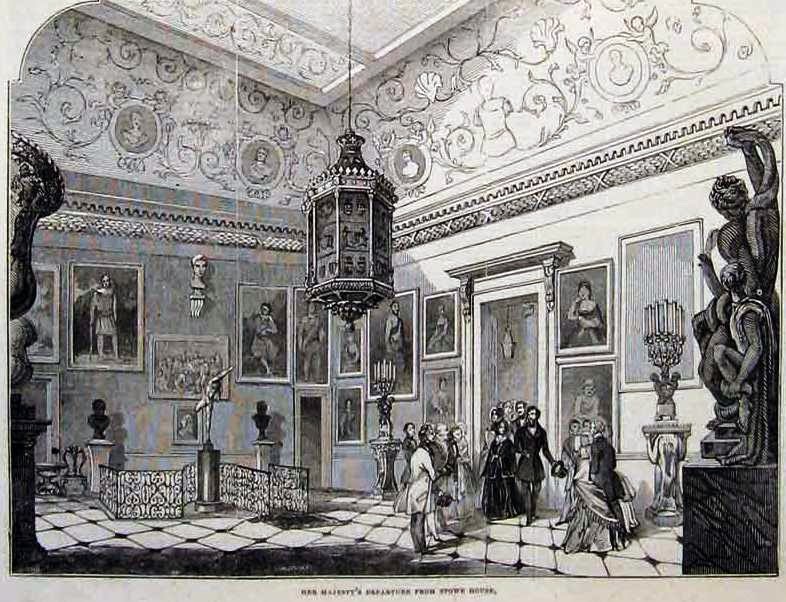
Queen Victoria's visit in 1845 to Stowe House was documented with this engraving which shows a bust still present on a corbel
Thanks to research led by Michael Bevington, former Head of Classics at Stowe School, evidence from an 1845 engraving, the Stowe Seeley Guides, and the 1848 sale catalogue helped identify what kinds of busts might have originally featured in the North Hall. This became the foundation for recreating the missing sculptures.
What Busts Have Been Created?
A total of nine busts have been made and installed in the North Hall. Each was carefully chosen or commissioned to reflect the classical themes and style appropriate to the period:
- Marcus Aurelius – Roman emperor, in jasper-effect drapery (north wall)
- Empress Salonina – with alabaster-effect drapery (north wall)
- Caracalla – Roman emperor, with alabaster-effect drapery (north wall)
- Homer – Ancient Greek poet, alabaster-effect drapery (north wall)
- Tiberius – on plinth (west wall)
- Nero – on plinth (west wall)
- Seneca – bronze-effect, on plinth (east wall)
- Hadrian – bronze-effect, on plinth (east wall)
- Juno – Roman goddess, pentelic marble-effect, on a corbel (east wall)
What Work was Undertaken to Create the Busts?
Early costings revealed that using solid marble or bronze – as the originals likely were – would have far exceeded the available budget. For example, just two bronze busts would have cost over £44,000.
The solution was to create the busts using jesmonite, a high-quality resin-based material that can be cast and then painted to resemble marble or bronze. This approach allowed the team to replicate classical materials like jasper, alabaster, and bronze, without the prohibitive cost.
A network of expert contractors was brought together, including Holkham Classic Sculpture, Chroma Conservation, and Cliveden Conservation. Each specialist brought skills in sourcing, sculpting, scanning, mould-making, casting, and finishing.
How were Decisions Made?
To ensure the busts were the correct size for their original settings, four different mock-up sizes were trialled. Trustees agreed that a height of 82cm was ideal for the corbels.
The first step was to source appropriate busts. Holkham Classic Sculpture loaned eight modern-made classical busts to trial in situ. Five were kept, and three rejected. One notable compromise was the inclusion of a Greek bust of Homer in place of a Roman figure, due to size suitability. As busts of Homer already exist elsewhere in the house, this felt like a fitting choice.
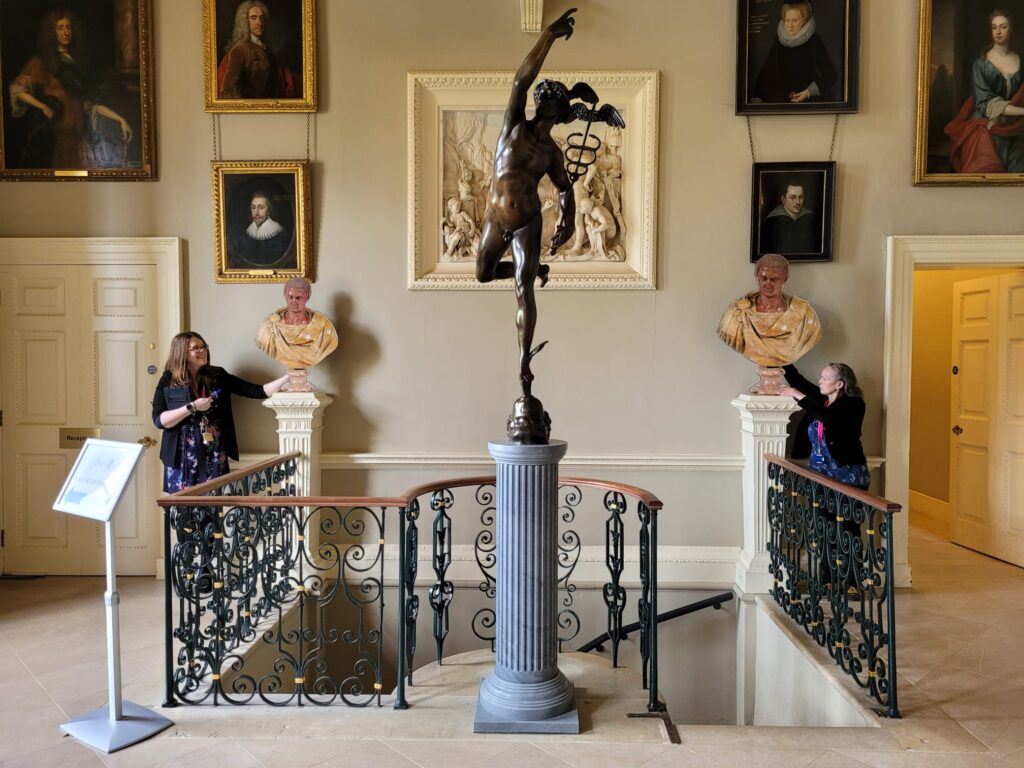
Different size bust templates are trialled on plinths in the the North Hall
Chroma Conservation hand-finished the busts with specialist paint techniques to mimic materials like jasper and alabaster, followed by a wax coating for a realistic texture. The team explain –
To create the faux alabaster and red jasper paint finishes for the drapery of the plaster busts of Homer, Caracalla, Empress Salonina and Marcus Aurelius, Ryan-John (Chroma Conservation’s Director of Fine and Decorative Arts) observed the natural figuring and distinctive features, characteristic of both types of rocks, and employed traditional marbling painting techniques using glazes and specialist brushes and other tools on a hand painted base coat to achieve a natural simulation of both chosen materials. The drapery was then varnished and waxed to give an overall natural finish.
Cliveden Conservation pursued an alternative route by scanning existing busts from heritage collections to produce accurate reproductions:
- A scan of Juno was already available. However, there was no reference image for her socle (the transitional base beneath the head). A new matching socle was added, and concerns about her hairstyle conflicting with the picture rail proved unfounded
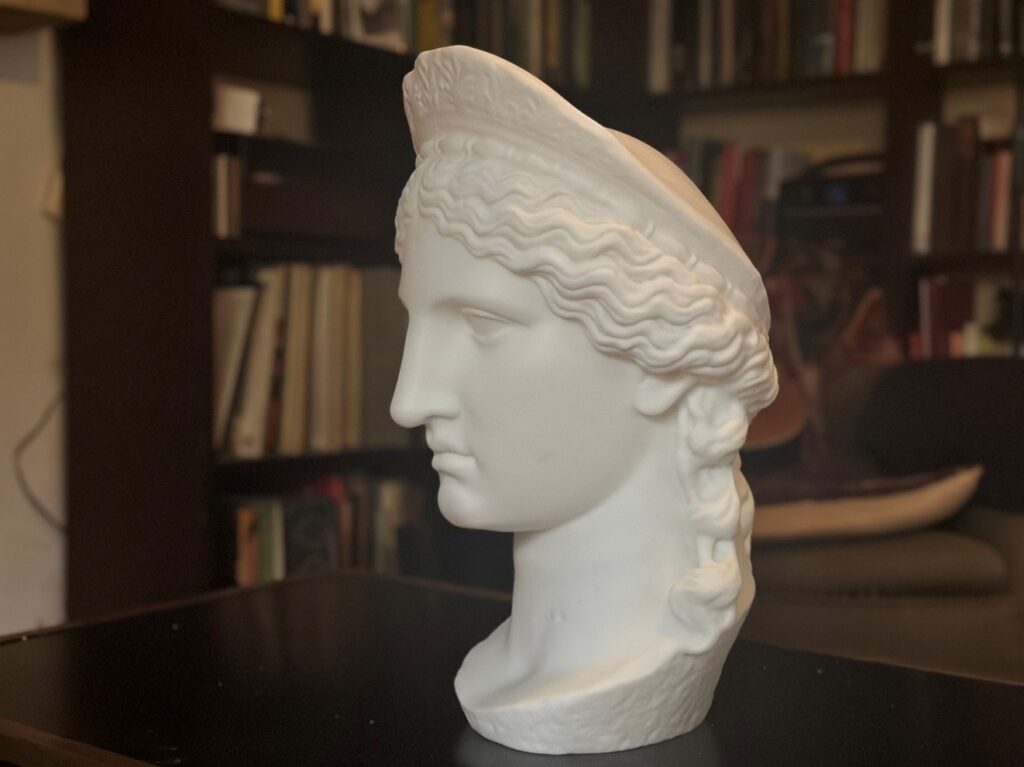
3D printed version of Juno ©Cliveden Conservation
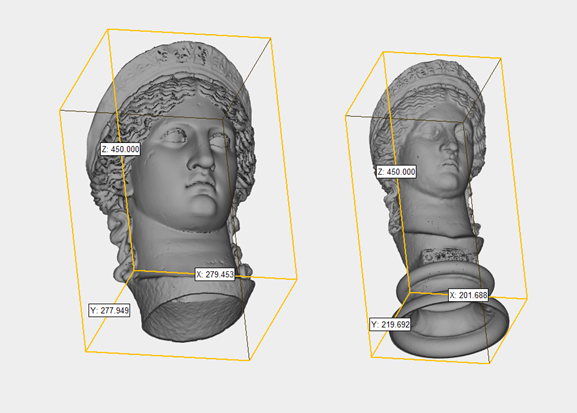
Scan of Juno ©Cliveden Conservation
- A scan of Hadrian from the Kunsthistorisches Museum Wien was trialled but ultimately rejected – it featured a medusa motif on the armour and didn’t align with Stowe’s visual narrative. Instead, a better-fitting scan was found using Petworth’s Hadrian as a reference
- Powis Castle (National Trust) generously allowed scanning of their Nero and Tiberius busts. As the originals were fixed to walls, full 3D scans weren’t possible. A digital artist was brought in to complete the scans for an extra £1,000 each
Scroll Through The Workshop
The full process:
- Scan the original sculpture or locate an existing 3D scan
- Confirm desired size and produce a 3D print
- Create a mould from the print
- Cast the bust in jesmonite (a durable resin and plaster mix)
- Hand-paint and wax to mimic marble or bronze finishes
Cliveden Conservation was delighted to be commissioned to reproduce three classical busts and a head of the Goddess Juno to replace those lost in earlier house sales, thus fully recreating the original decoration of the North Hall at Stowe. The busts of Roman Emperors Hadrian, Tiberius and Nero were initially to be directly moulded in silicone rubber from copies held by the National Trust, but unfortunately, this was not possible. Therefore, the decision was made to digitally copy the busts, which was a non-intrusive process with no direct contact with the delicate object. Scans were executed, and digital twins were created and prepared for printing. The process was useful in that it allowed for the digital copies to be resized according to requirements. Once printed to the correct size, silicone rubber moulds were made of the printed busts, and all were cast in ‘marble’ Jesmonite, which was patinated with microcrystalline wax, lightly pigmented to mimic the shine and colouration of antique marble. The process resulted in a slight loss of detail when compared to direct moulding, but this was overcome by reworking of the finished casts to improve definition. It has been a pleasure to work with Stowe House Preservation Trust throughout this project and to see the replica busts back on display within the North Hall.René Rice, Project Development, Cliveden Conservation
What was the Installation Process?
In the summer of 2025, the busts were installed in the North Hall. Each bust was carefully glued and pinned to its corbel or plinth through the socle to ensure stability. Final on-site adjustments were made by contractors to achieve the perfect fit and finish. The addition of these nine busts marks the completion of the North Hall restoration – the final flourish in bringing the room back to life.
Installing The Busts
How Can I See The North Hall?
The busts bring the final flourish to the North Hall’s transformation. Visitors can now admire the restored room and its sculptures during school holidays, when Stowe House is open for free-flow visits and guided tours.
During term time, visits are guided only.
A visit includes:
- Access to the grand State Rooms
- Tour guides sharing fascinating stories and bust details
- A Visitor Centre with museum, café, shop, and garden courtyard
Book online to check opening hours and secure parking near the house.
Thanks To
We are deeply grateful to Sarah, Dowager Countess of Leicester at Holkham Classic Sculpture, to the curators of the National Trust, and to our talented contractors at Cliveden Conservation and Chroma Conservation.
This project would not have been possible without the generosity of our benefactors and the Hall Bequest Trust.
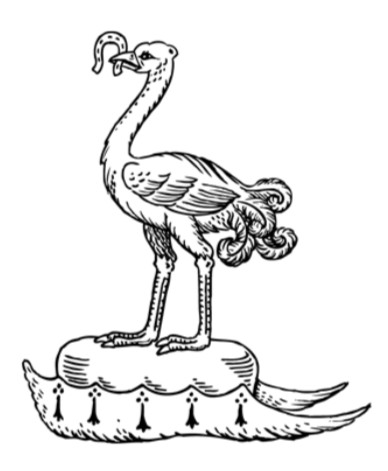
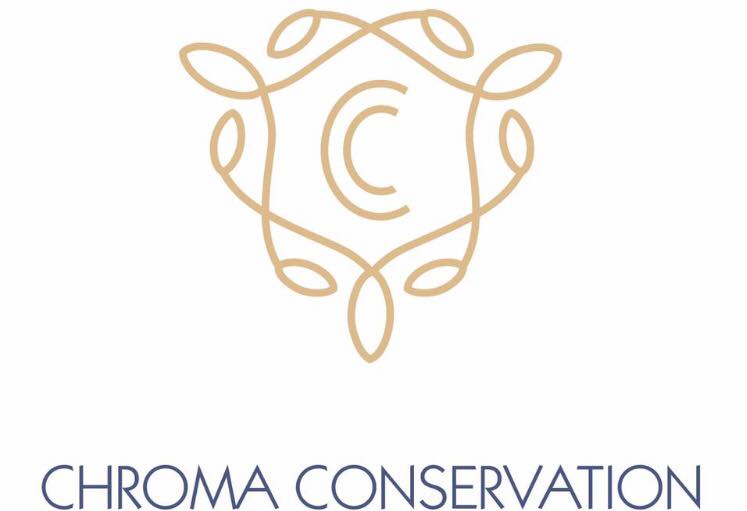

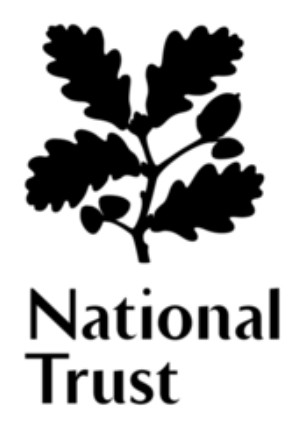
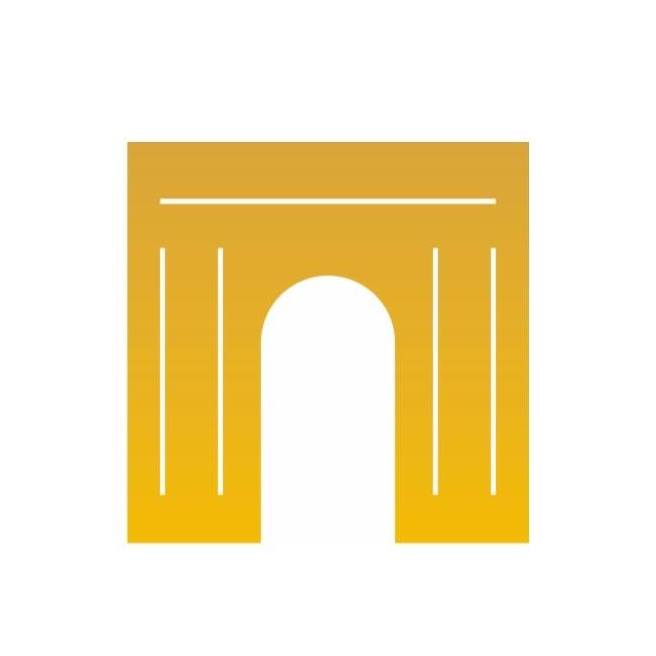
Collection To See In The North Hall
A Fascination For Detail?
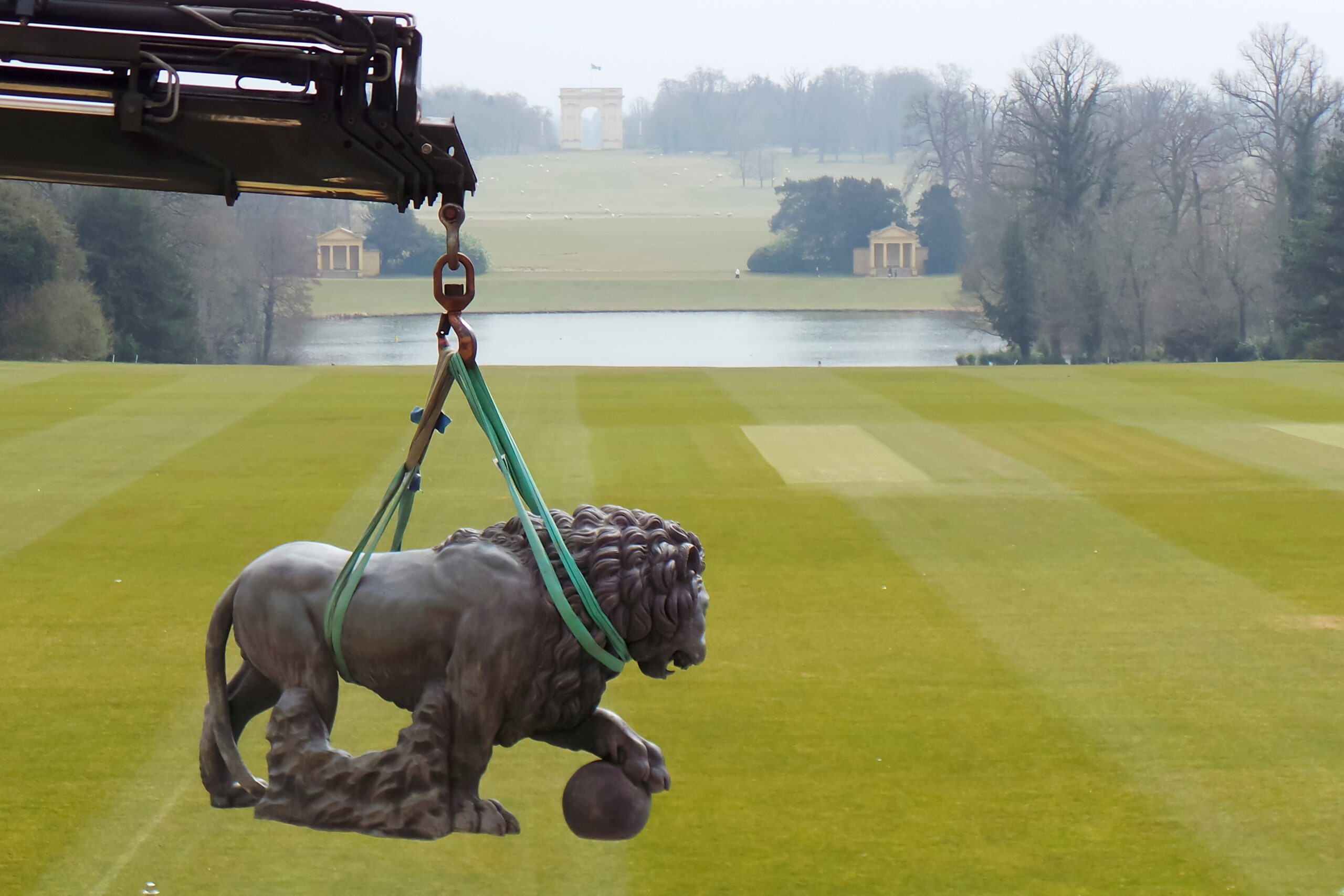
Restoration
Stowe House has seen 300 years of change—from a famed tourist attraction to the rise and fall of its owners. Today, ongoing restoration is bringing its rich history back to life.
Restoration
History
The story of Stowe and the Temple-Grenville family is one of ambition, grandeur, politics and dramatic twists. The rise of their fame and fortune through the 18th and early 19th centuries is matched only by their dramatic fall. Read all about the history of Stowe House in this article.
History
